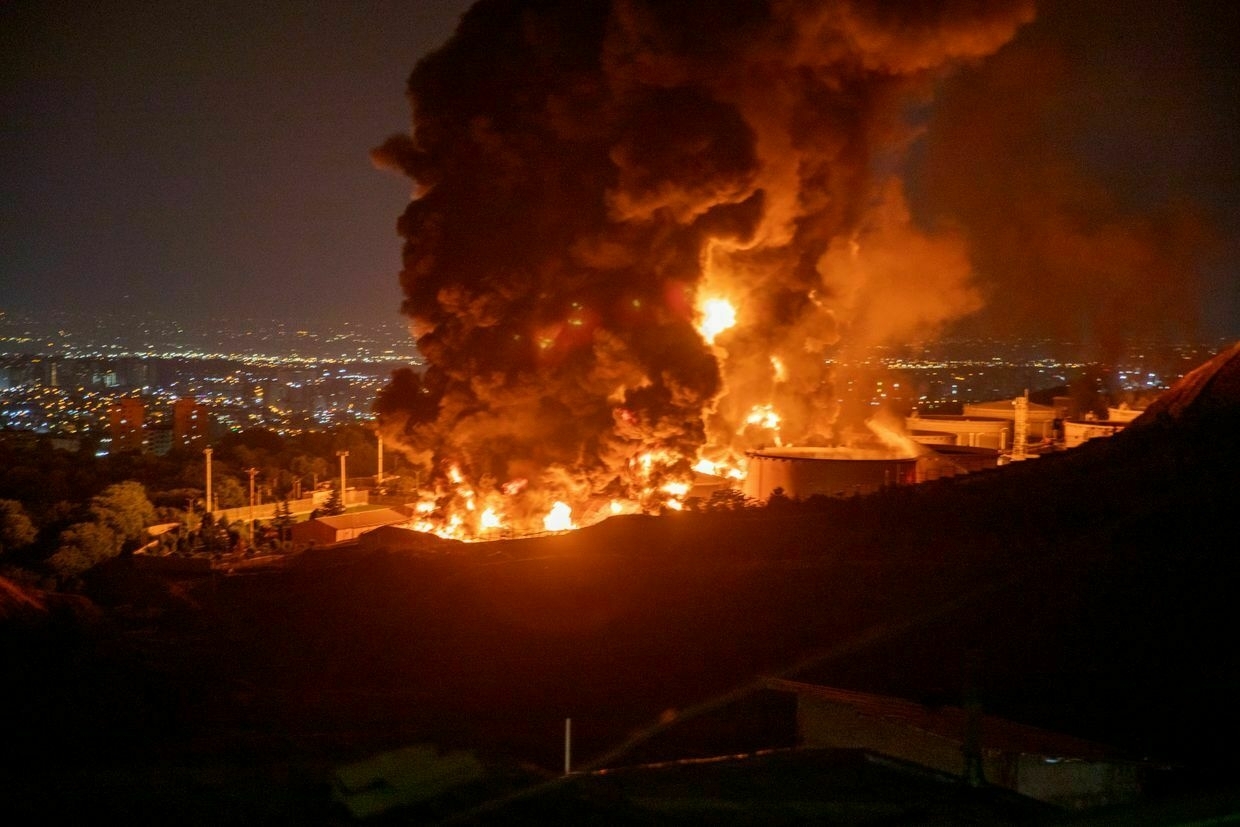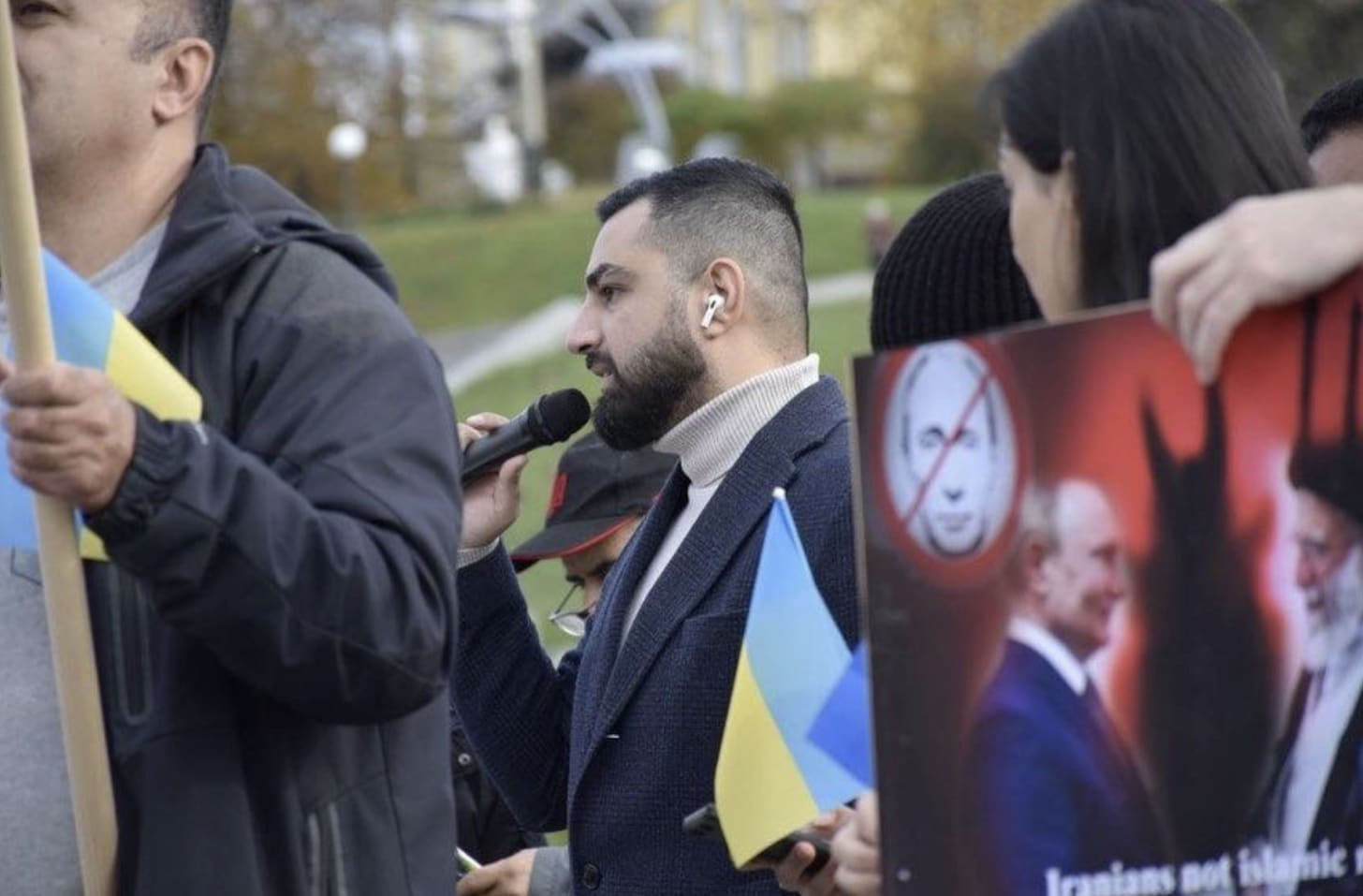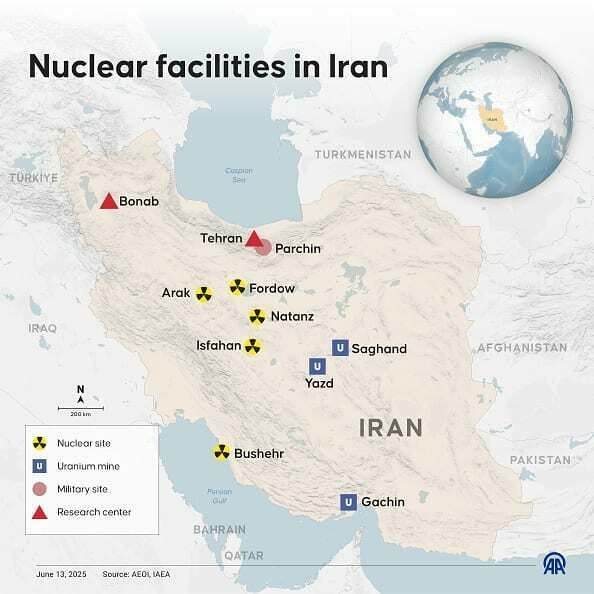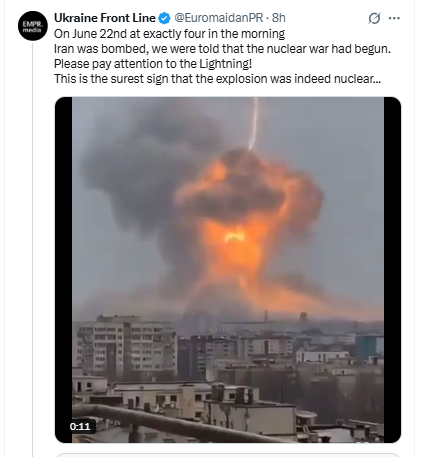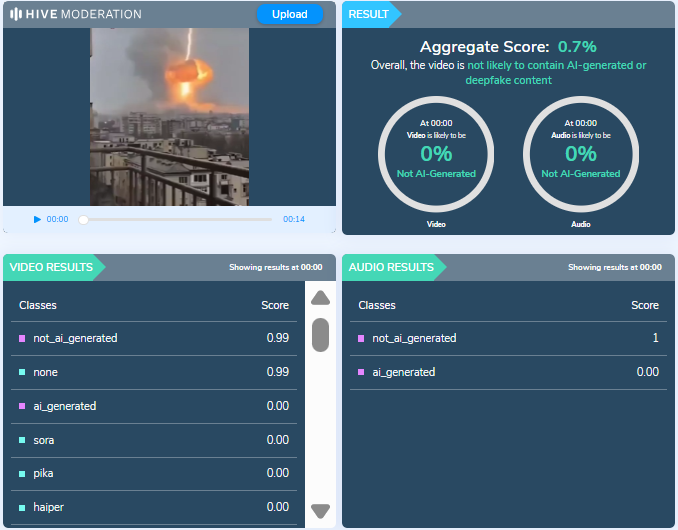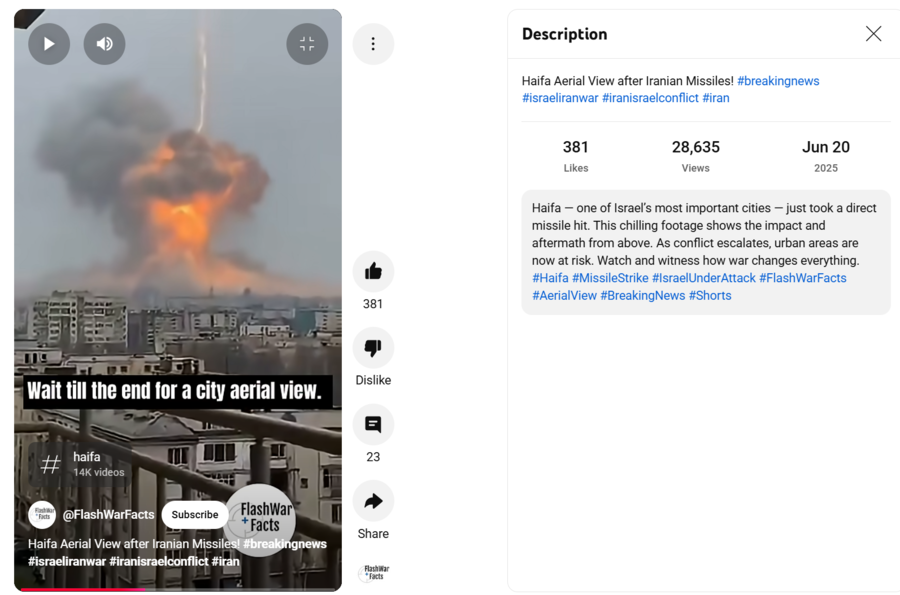-
Zelensky expected to speak at Council of Europe parliamentary session next week
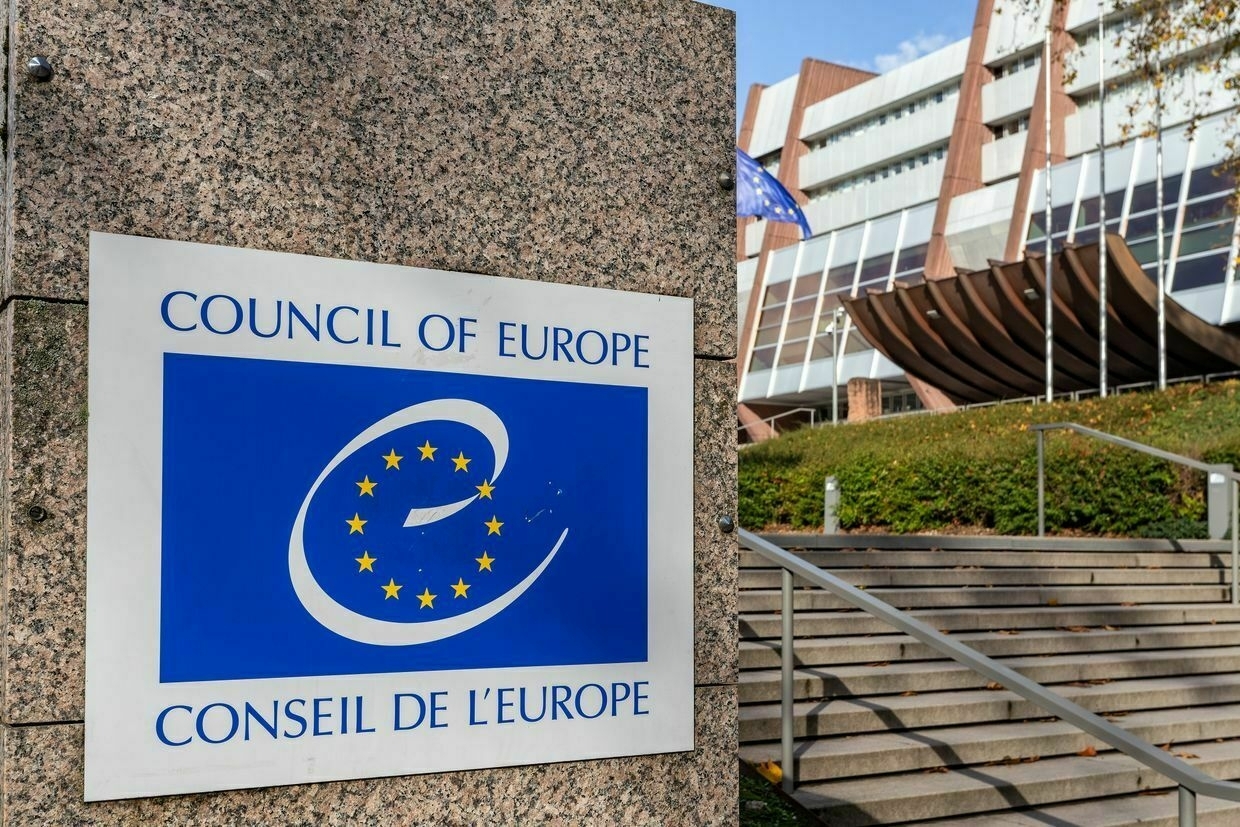
President Volodymyr Zelensky is expected to attend the summer plenary session of the Parliamentary Assembly of the Council of Europe (PACE), scheduled for June 23-27 in Strasbourg, France.
According to the draft agenda, Zelensky is slated to address the assembly on June 26, though his attendance has not yet been confirmed.
While the content of Zelenky’s speech has not been disclosed, the PACE summer session is expected to focus on women’s rights in Europe as well as the war in Gaza.
Legal and human rights issues related to Russia’s ongoing war against Ukraine, and a corresponding resolution, are also listed on the agenda.
The spring session, which took place in April 2025, focused predominantly on Georgia, Turkey, and Ukraine.Ahead of the PACE session, Zelensky is also set to attend next week’s NATO summit in The Hague on June 24. He is expected to meet with European Commission President Ursula von der Leyen and NATO Secretary-General Mark Rutte.
PACE is the parliamentary arm of the Council of Europe, an international organization of 46 countries, including Ukraine, that promotes democratic values and human rights. Russia was expelled from the body in early 2022 in response to its invasion of Ukraine.
Since the start of the full-scale invasion in 2022, the assembly has issued a number of resolutions regarding Russia, calling for the establishment of an international special tribunal to hold Russia accountable for war crimes and recognizing Putin as an illegitimate dictator.
Most recently, PACE adopted a resolution addressing the ongoing Russian war of aggression against Ukraine, stressing the urgent need to ensure accountability and avoid impunity for the serious breaches of international law committed.
Pro-Russian ‘peace protestors’ set to descend on NATO summitDutch protesters who regularly call for an end to military aid to Ukraine will descend on The Hague next week to protest the upcoming NATO summit, which is set to take place on June 24-25. The group will protest against NATO alongside several other organizations and has urged supporters onThe Kyiv IndependentLinda Hourani
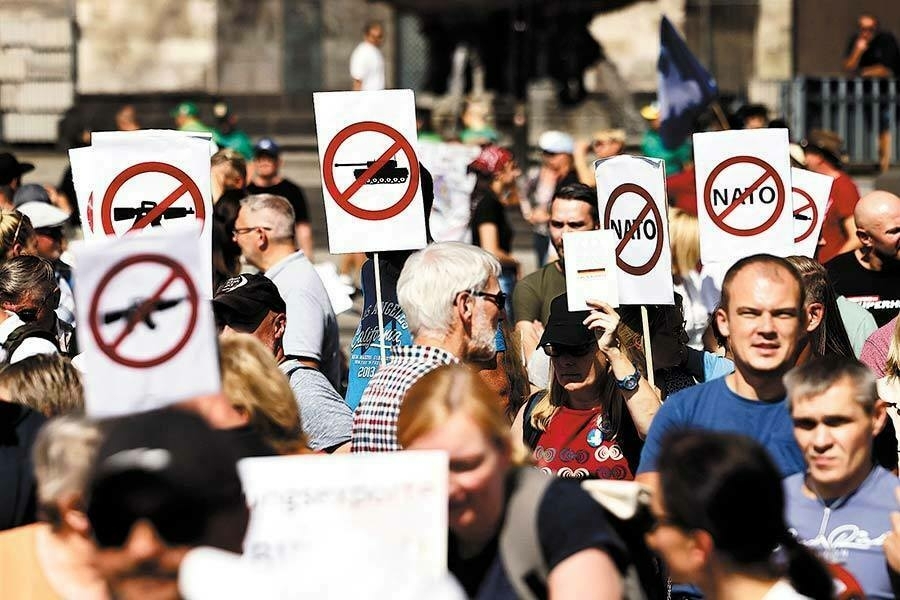
-
Russia launches drone attacks on Kyiv, injuring 2
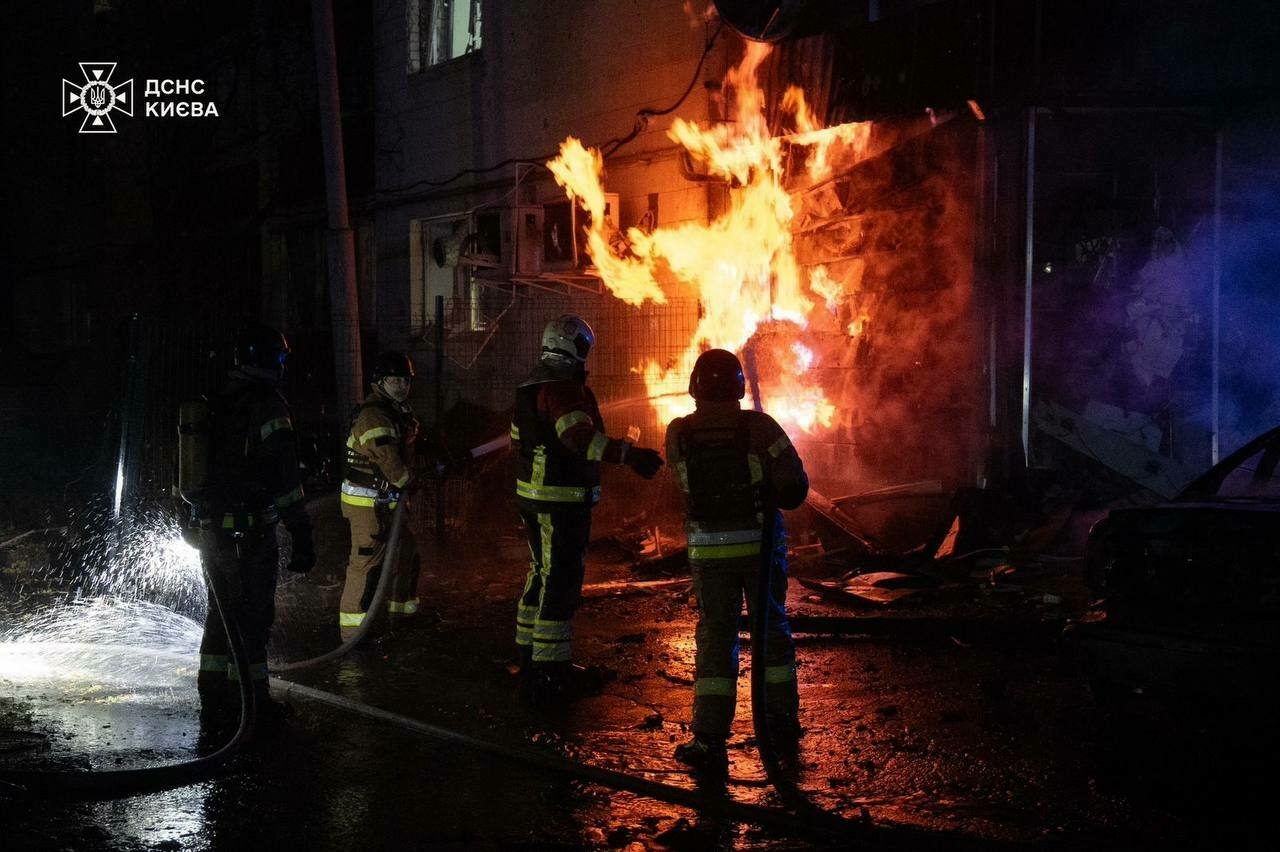
Editor’s note: This is a developing story and is being updated as new details emerge.
Russia launched a wave of drone attacks on Kyiv overnight on June 23, local officials reported.
As of 1:40 a.m. local time, two people had been reported injured, Kyiv Mayor Vitali Klitschko said on Telegram. The two injured people have been hospitalized.
By 2:59 a.m. local time, reports indicated that the Darnytskyi, Solomianskyi, and Svyatoshynskyi districts had been affected.
In Darnytskyi, debris from a drone strike fell on a two-story residential building, but no fires or casualties were reported.
Fires broke out in the Solomianskyi district, where debris also struck a residential building.
In the Sviatoshynskyi district, a high-rise apartment building was damaged, though there were no fires or casualties. Drone strike debris also landed in an open area of a stadium in Sviatoshynskyi, again without injuries or fire.
Air defense systems remained active across the city.
Russian attacks kill 7, injure 23 in Ukraine over past dayRussia launched two Iskander-M or North Korean KN-23 ballistic missiles, an S-300 anti-aircraft missile, and 47 Shahed-type attack drones and decoy drones against Ukraine overnight, primarily targeting Chernihiv Oblast, Ukraine’s Air Force reported.The Kyiv IndependentMartin Fornusek
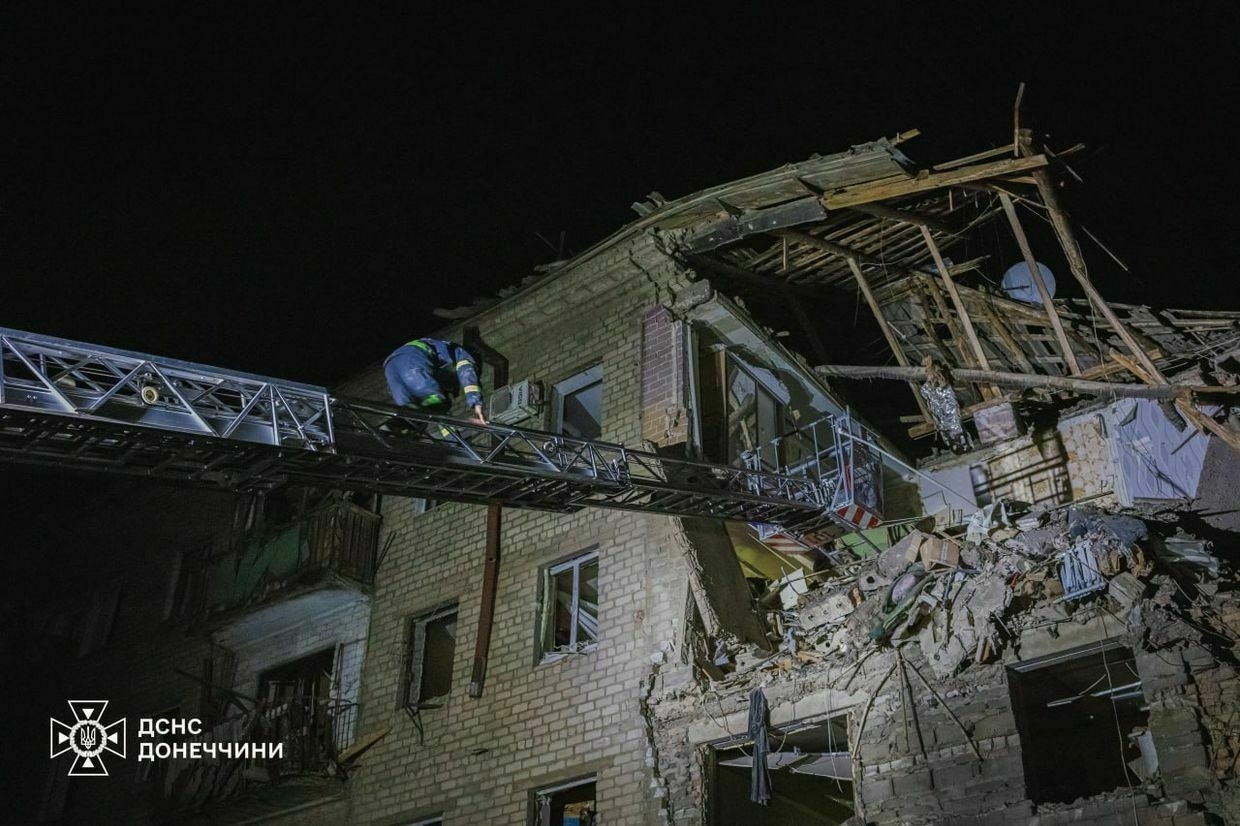
-
Norway to invest $400 million in Ukraine's drone, air defense missile production
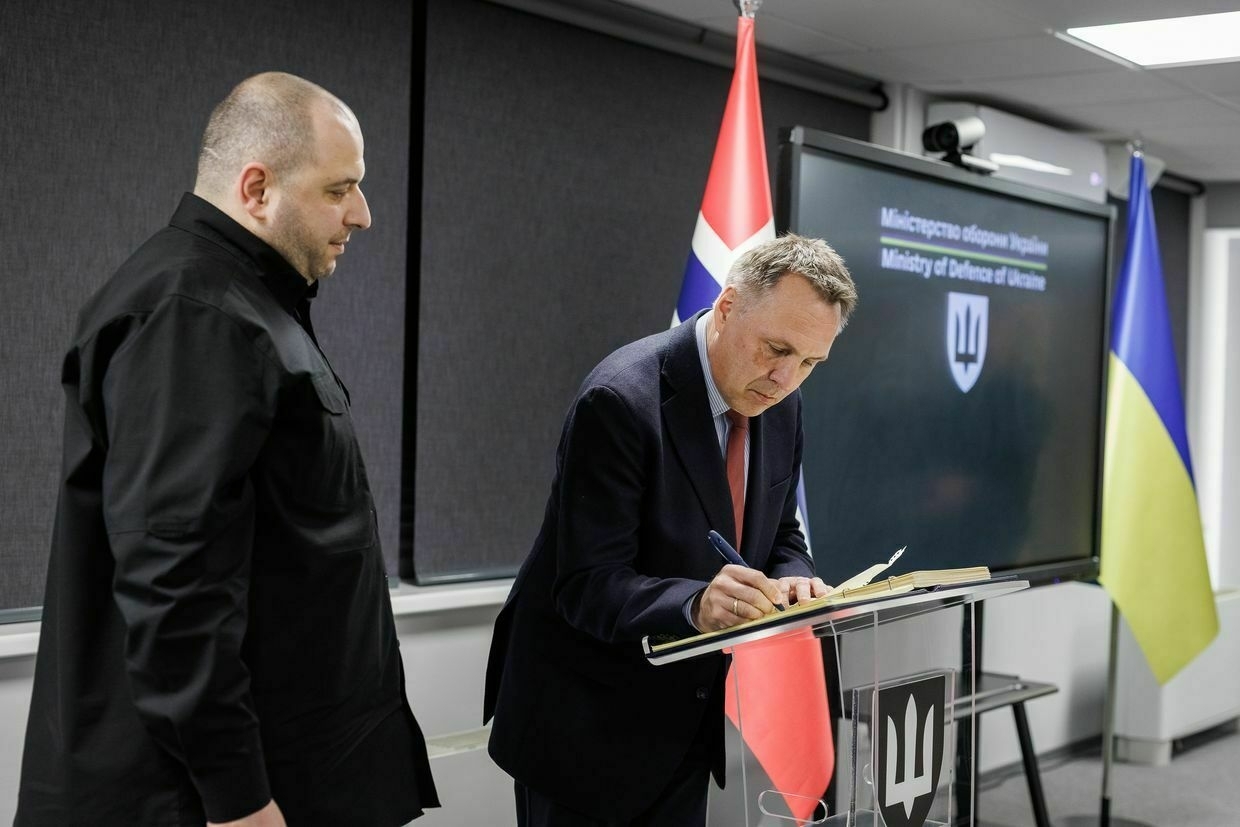
Norway will invest $400 million in Ukraine’s defense industry to support drone and air defense missile production, President Volodymyr Zelensky said in his nightly address on June 22.
The announcement followed a visit to Ukraine by Norwegian Defense Minister Tore Onshuus Sandvik.
“Today, Norway’s Minister of Defense visited Ukraine. A decision has been reached to invest $400 million in our production – new funding, primarily for drones,” Zelensky said.
Zelensky added that the two countries are also working together to establish joint air defense production inside Ukraine.
“We are working together to create all the necessary conditions to produce air defense systems in Ukraine — jointly with partners, jointly with Norway,” Zelensky said.
He added that Norway’s largest defense company – Kongsberg Defence & Aerospace – has already opened an office in Ukraine as part of the cooperation.
“We are expediting all processes to the maximum extent,” Zelensky said.
On X, Norway’s defense ministry confirmed that Kongsberg has signed agreement with a major Ukrainian company to jointly develop and produce missiles for air defense systems in Ukraine.
The collaboration will focus on producing missiles for the National Advanced Surface-to-Air Missile System, or NASAMS.
“The Norwegian NASAMS system saves lives in Ukraine every day, and is crucial in protecting critical infrastructure. That is why it is important for the Norwegian Government to finance this development of cheaper missiles for the NASAMS system in Ukraine,” said Minister Sandvik.
The announcement marks deepening ties between Kyiv and Oslo as Ukraine seeks to expand its domestic defense industry amid Russia’s ongoing full-scale invasion and reduced military aid from the United States.
Ukraine war latest: ‘Ukrainian drones for the foot of every Russian soldier’ — Zelensky responds to Putin’s threat to conquer all of UkraineKey developments on June 21-22: * ‘Ukrainian drones for the foot of every Russian soldier’ — Zelensky responds to Putin’s threat to conquer all of Ukraine. * 3 killed, 14 wounded as Russia strikes Ukrainian military training facility. * Russia seeks to advance along almost entire eastern front, Ukraine holding ground in Kursk Oblast,The Kyiv IndependentSonya Bandouil
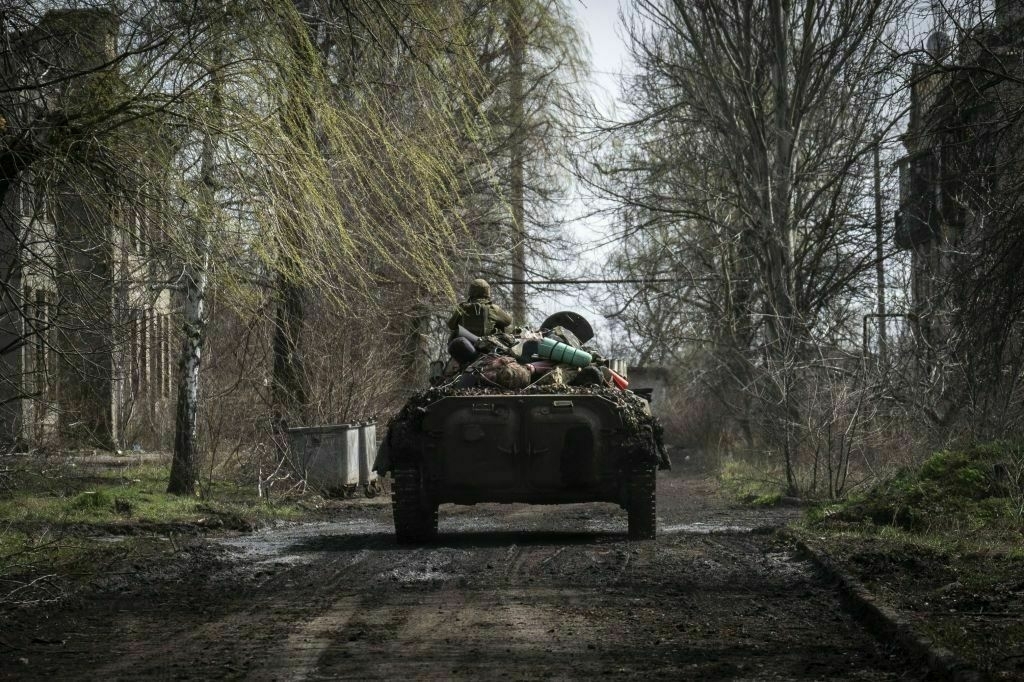
-
Ukraine war latest: 'Ukrainian drones for the foot of every Russian soldier' — Zelensky responds to Putin's threat to conquer all of Ukraine
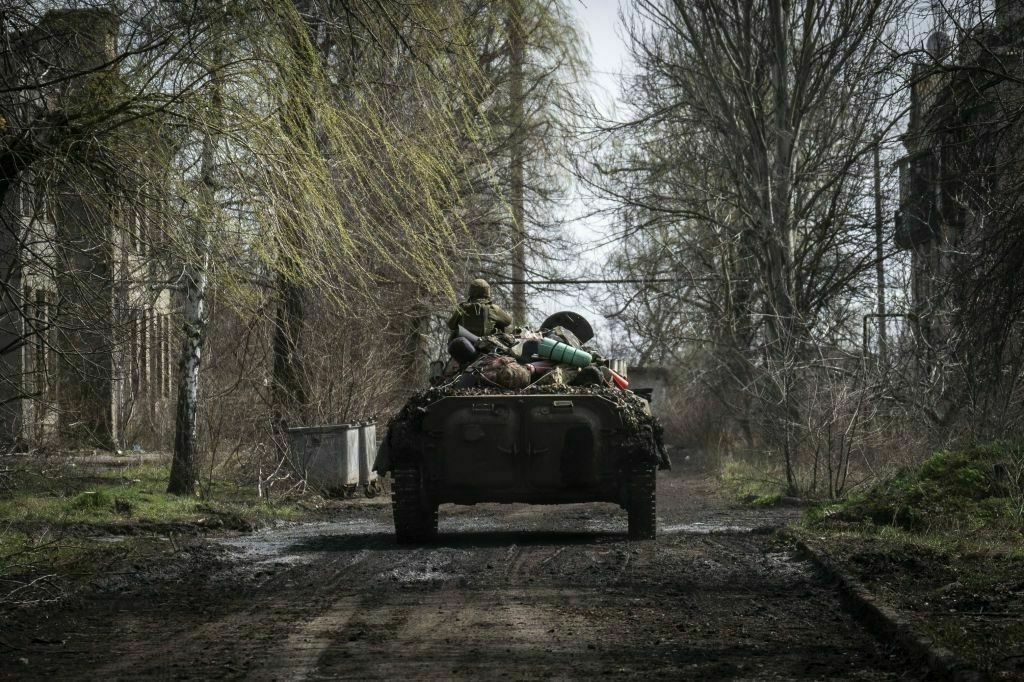
Key developments on June 21-22:
- ‘Ukrainian drones for the foot of every Russian soldier’ — Zelensky responds to Putin’s threat to conquer all of Ukraine.
- 3 killed, 14 wounded as Russia strikes Ukrainian military training facility.
- Russia seeks to advance along almost entire eastern front, Ukraine holding ground in Kursk Oblast, Syrskyi says.
- Ukraine approves Termit ground drone for battlefield deployment.
- Ukraine’s deep strikes cost Russia over $10 billion this year, Syrskyi says.
- Ukraine destroys 80% of Russian drones despite air defense missile shortage, Syrskyi says.
President Volodymyr Zelensky on June 21 responded to Russian President Vladimir Putin’s recent statements on Ukraine, saying that Ukraine intends to defend itself and that the government had made several decisions to bolster security in light of the Kremlin’s threats.
Putin said “all of Ukraine” belongs to Russia in a speech on June 20 at the St. Petersburg International Economic Forum, pointing to Moscow’s maximalist territorial ambitions in Ukraine.
“Wherever the foot of a Russian soldier steps is Russian land,” he said.
In his evening address on June 21, Zelensky described Putin’s speech as a “performance” but said Ukraine was taking the threats seriously.
“But when a murderer says he wants to kill, we take it seriously and will respond together with our partners,” Zelensky said.
“I hope with all our partners,” he added, likely referring to the United States' diminishing support for Ukraine under U.S. President Donald Trump.
Zelensky said he held meetings with Vasyl Maliuk, head of the Security Service of Ukraine (SBU), Commander-in-chief Oleksandr Syrskyi, and Foreign Minister Andrii Sybiha about how to bolster Ukraine’s defense and international support.
“Of course, we will find Ukrainian drones for the foot of every Russian soldier,” he said. “Of course, Ukraine will defend itself."
The Ukrainian government has made several decisions in light of Russia’s overt threats, Zelensky said. These include a complete diplomatic overhaul and transformation of Ukraine’s Foreign Ministry, intensified efforts to coordinate international sanctions, and more funding for drone development.
Kyiv’s instructions for the SBU remain confidential, Zelensky said.
Russia recruits Central Asia migrants as ‘cannon fodder’ in Ukraine war, HUR saysCitizens of Uzbekistan, Tajikistan, and other countries in the region are increasingly being drawn into Russia’s war effort, Ukraine’s military intelligence (HUR) says.The Kyiv IndependentTim Zadorozhnyy
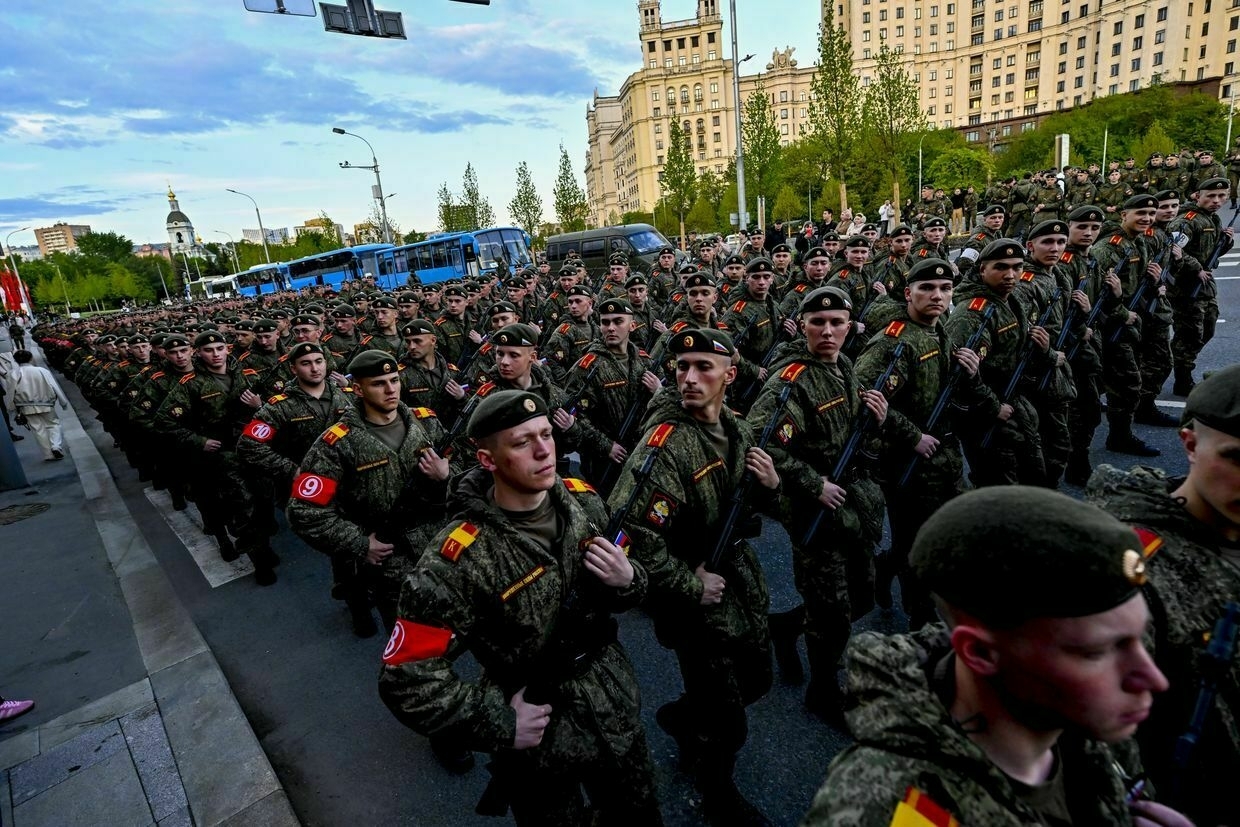
3 killed, 14 wounded as Russia strikes Ukrainian military training facilityRussia launched a missile attack on June 22 on the training ground of a Ukrainian mechanized brigade, where military personnel were being trained, the Ground Forces reported.
“Unfortunately, there are dead and wounded,” the statement read. The Ground Forces said that greater personnel losses were avoided thanks to the timely security measures taken when the air raid alert was issued.
Around 5:30 p.m., the Ground Forces initially said that three people were killed in the attack and 11 were wounded.
The number of injured was later updated, at around 7:30 p.m., to 14 people.
A special commission has been set up at the Ground Forces Command to investigate the incident, according to the statement. Law enforcement agencies are also working at the scene.
It is the second officially confirmed Russian attack in June that led to military casualties in the training facilities, adding to a chain of such attacks in the past few months.
Former Ground Forces Commander Mykhailo Drapatyi had promised to ensure new safety standards on the training grounds and hold accountable those responsible for the deaths after a Russian strike on March 1 on the training ground in Dnipropetrovsk during exercises.
Yet on May 20, another Russian missile strike against a shooting range in Sumy Oblast killed six service members and injured over 10, according to Ukraine’s National Guard.
After another Russian attack on June 1 on a Ukrainian military training ground killed 12 and injured 60, Drapatyi submitted his resignation as the Ground Forces Commander. He was appointed Commander of the Joint Forces on June 3.
Ukraine’s swift release of the statement and casualty number in the latest Russian attack stands out, as both Ukraine and Russia rarely acknowledge successful enemy attacks against their military facilities.
Former Ukrainian POW dies month after being released from Russian captivitySerhii Dobrovolskyi, a Ukrainian soldier who had been in Russian captivity since 2023, has died just a month after his release at the end of May as part of a 1000-for-1000 prisoner swap, an official from the soldier’s home region announced on June 21.The Kyiv IndependentNatalia Yermak

Russia seeks to advance along almost entire eastern front, Ukraine holding ground in Kursk Oblast, Syrskyi saysRussian forces are attempting to advance along almost the entire front in eastern Ukraine while trying to establish a buffer zone in northeastern Sumy Oblast, Commander-in-Chief Oleksandr Syrskyi told journalists on June 21.
The comments come as Moscow launched a new summer offensive against Ukraine, disregarding calls by Kyiv and its Western partners for an unconditional ceasefire.
The offensive’s goal is to reach the administrative borders of Donetsk and Luhansk oblasts in the east, and create a buffer zone in the border areas of the Sumy and Kharkiv oblasts, Syrskyi said at a meeting attended by the Kyiv Independent.
As of mid-June, Ukrainian defenders are fighting close to 695,000 Russian troops in Ukraine across a 1,200-kilometer (750-mile) front, the commander said, adding that Moscow recruited about 440,000 contract soldiers this year.
According to the open-source intelligence group DeepState, Russian forces occupied approximately 449 square kilometers (173 square miles) in May, the highest monthly figure this year.
Ukraine has managed to stop the Russian advance in Sumy Oblast at the moment, Syrskyi noted. “The situation there has been stabilized… we have recaptured Andriivka, and advanced between 200 and 700 meters in Yunakivka in a week,” he said.
Russian forces are also attempting to fully oust Ukrainian troops from Russia’s home territory in the Kursk and Belgorod oblasts.
“We control about 90 square kilometers (35 square miles) in the Glushkovsky district of Russia’s Kursk Oblast,” Syrskyi said.
Ukraine launched the cross-border offensive into Kursk Oblast — bordering Ukraine’s Sumy Oblast — last August, initially seizing 1,300 square kilometers (500 square miles) but losing the vast majority of this territory in a Russian counteroffensive earlier this year.
Moscow initially declared to have fully liberated the region on April 26, but this claim was rejected by Ukraine and later disputed by Russian officials themselves.
Kyiv has said the incursion was meant to preempt a Russian offensive into Sumy Oblast and force Russia to redirect troops fighting in Donetsk Oblast.
Syrskyi stressed that at one point, the Kursk operation drew in almost 63,000 Russian soldiers, which, in addition to North Korean soldiers, amounted to about 70,000 troops deployed in the region.
“In April 2025, Russian units – and this, I remind you once again, is about 60 thousand people… were tasked with moving to new sectors and reinforcing Russian assault groups in the Pokrovsk, Toretsk, Lyman, Zaporizhzhia, and Kherson directions,” Syrskyi said.
“But our actions in the Glushkovsky district of Russia’s Kursk Oblast thwarted these plans.” At the moment, about 10,000 Russian soldiers are fighting in the Glushkovsky district, the commander added.
Syrskyi also said Russian assault units approached the administrative border of Dnipropetrovsk Oblast but were thrown back.
“As for our plans and intentions. Of course, we will not simply remain in a blind defense… Therefore, we combine defensive actions with active defense and active offensive operations,” Syrskyi said.
For this purpose, the Ukrainian military is scaling up its assault units, which were created at the beginning of the Kursk operation and are currently deployed in all areas of the front, he added.
Ukraine planning diplomatic overhaul to win stronger global support against Russia“The president has already made certain personnel decisions regarding the heads of some foreign institutions, because the criterion is very simple: results,” Foreign Minister Andrii Sybiha said on June 21.The Kyiv IndependentAbbey Fenbert
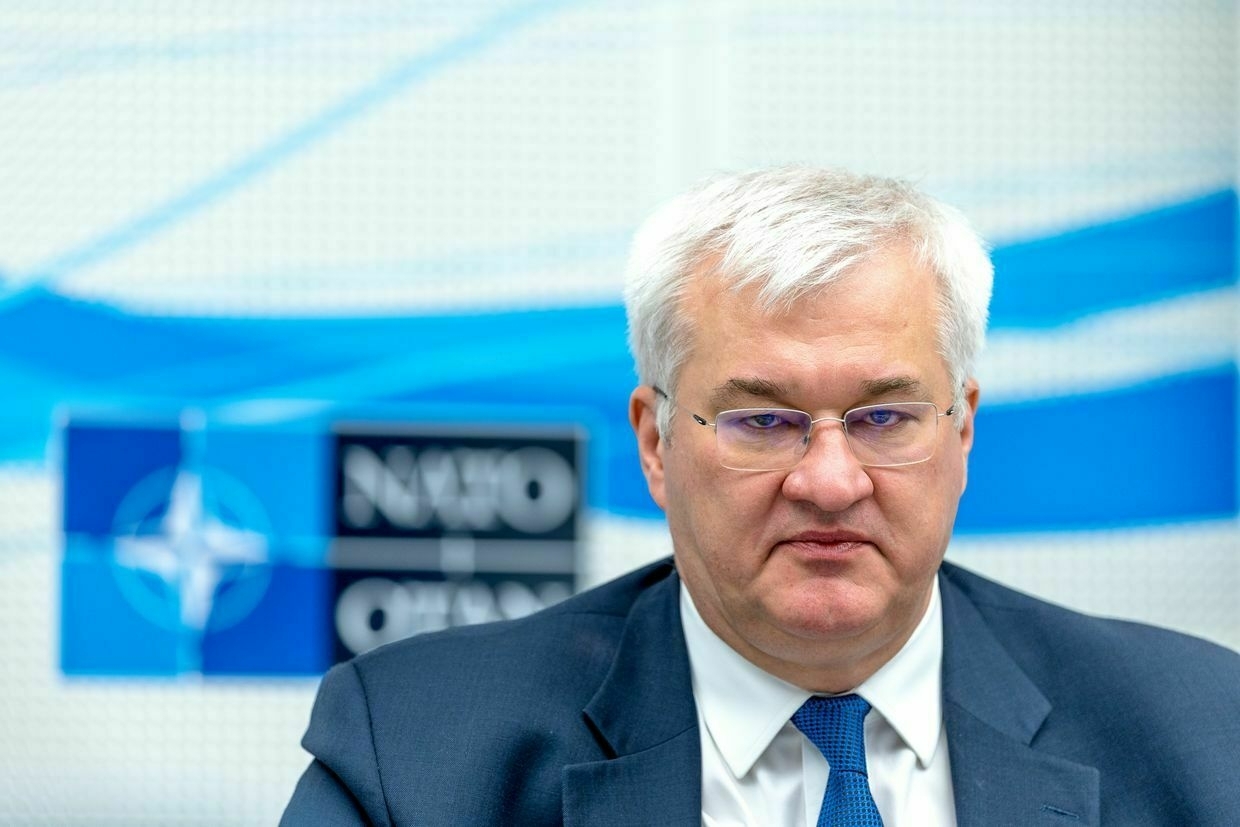
Ukraine approves Termit ground drone for battlefield deploymentUkraine’s Defense Ministry has officially approved the new domestically produced unmanned ground vehicle, known as the Termit, for front-line use, the ministry announced on June 21.
The tracked robot is a next-generation version of Ukraine’s existing ground-based unmanned systems already deployed across the front. These systems have supported operations by transporting supplies, conducting reconnaissance, and carrying explosives in contested areas.
Termit, the newest model in the series, features improved mobility and modularity. The drone can carry up to 300 kilograms and operates on various terrains thanks to its low profile, tracked design, and improved weight distribution.
Subscribe to Ukraine Daily newsletterNews from Ukraine in your inbox<span data-sanitized-id="ud-snippet-info" data-sanitized-class="ud-snippet__info"></span> <button data-sanitized-id="ud-snippet-subscribe-btn" data-sanitized-class="ud-snippet__form-btn"> <span data-sanitized-class="ud-snippet__form-label">Subscribe</span> </button> </div>Its traction battery system allows for several hours of continuous movement over dozens of kilometers. According to the Defense Ministry, Termit drones can be equipped with combat modules, used for medical evacuations, or for transporting specialized equipment as needed.
Ground drones such as Termit are being used more frequently to minimize soldier exposure to front-line risks. Since Russia's full-scale invasion in 2022, Kyiv has prioritized the development of unmanned systems across all domains — air, sea, and land.
President Volodymyr Zelensky has called for the production of at least 30,000 long-range drones in 2025, alongside expanded investment in strike-capable hybrids such as the Palianytsia and Peklo missile-drone platforms.
Russia ‘afraid to admit’ scale of losses, trying to hide by dumping soldiers’ bodies on Ukraine, Zelensky saysUkrainian authorities have confirmed that at least 20 of the bodies Russia returned as Ukrainian were actually Russian soldiers, President Volodymyr Zelensky said.The Kyiv IndependentTim Zadorozhnyy
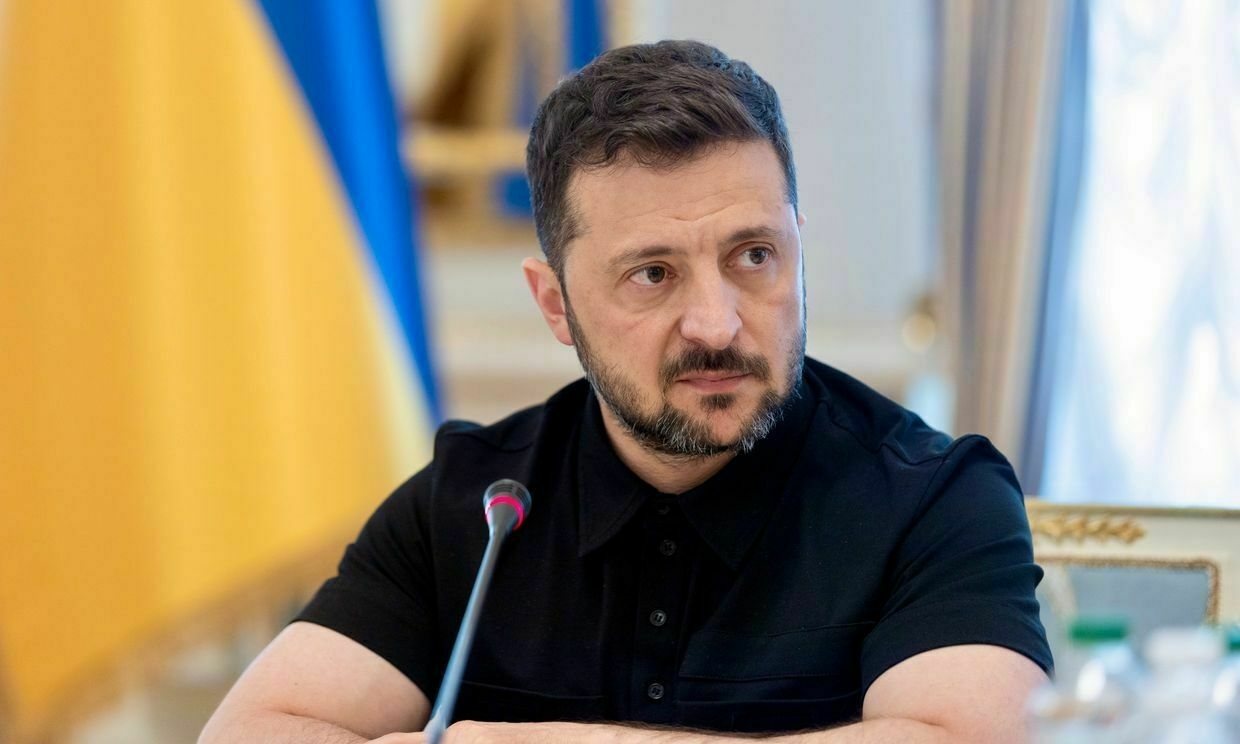
Ukraine's deep strikes cost Russia over $10 billion this year, Syrskyi saysUkrainian strikes deep inside Russian territory between January and May have cost Russia over $10 billion, including $1.3 billion in direct damage to industrial facilities and infrastructure, Commander-in-Chief Oleksandr Syrskyi told journalists on June 21.
The indirect damage caused by the disruption of Russian industrial activities is estimated at $9.5 billion, putting the cost-to-result ratio of Ukrainian deep strikes at 1:15, Syrskyi said at a briefing attended by the Kyiv Independent.
Kyiv has ramped up drone attacks against Russian military and industrial sites far behind the border as part of its DeepStrike strategy, seeking to undermine Moscow's ability to wage war.
The attacks targeted Russia's oil refining sector, the fuel and lubricants facilities, energy and transport support, and strategic lines of communication.
"Remember that during negotiations, the Russian side listed a halt to strikes against the oil refining industry as one of the conditions. This shows that our strikes are truly effective," Syrskyi said.
Oil and gas exports are among Russia's key revenue sources and play a crucial role in sustaining its war effort.
"Of course, we will continue (attacking deep inside Russian territory). We will increase the scale and the depth," the commander added, stressing that the attacks target solely military facilities.
Ukraine has increased the production of long-range drones with the support of Western partners and developed new tactics in striking Russia behind the lines.
In one of the most audacious attacks, the Security Service of Ukraine (SBU) on June 1 struck dozens of Russian bombers and other aircraft across four different air bases in an operation dubbed Spiderweb. SBU drones were smuggled to Russia in trucks and then deployed to attack airfields thousands of kilometers from the Russia-Ukraine border.
Russia’s Oreshnik missile production can be halted by ‘urgent’ sanctions, Zelensky saysRussia first launched the experimental Oreshnik missile in an attack against Dnipro on Nov. 21.The Kyiv IndependentKateryna Denisova
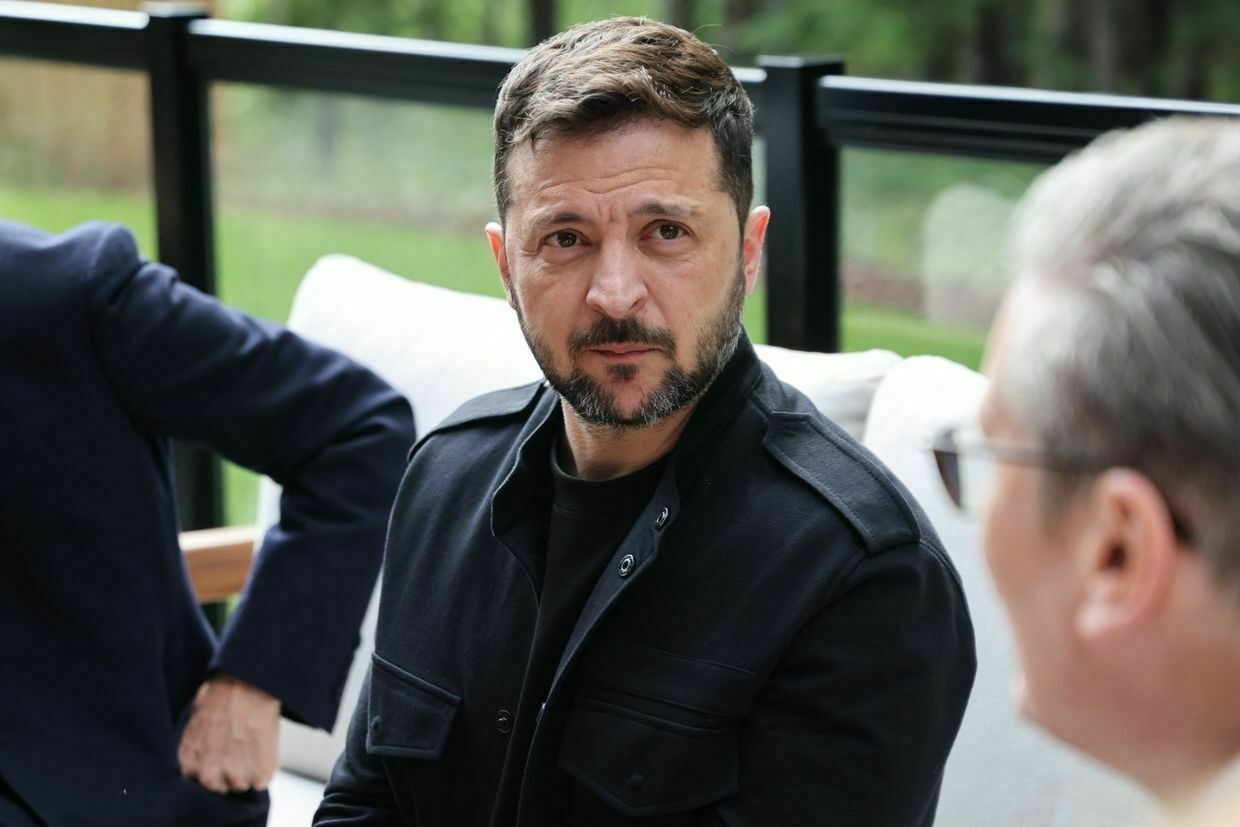
Ukraine destroys 80% of Russian drones despite air defense missile shortage, Syrskyi saysUkraine is downing approximately 82% of Russian Shahed-type drones during Russian massive aerial attacks on Ukrainian cities despite a serious shortage of surface-to-air missiles, Commander-in-Chief Oleksandr Syrskyi told journalists on June 21.
Ukraine needs to have many times more surface-to-air missiles and anti-aircraft missile systems to ensure reliable defense of cities and critical infrastructure facilities, Syrskyi said at a briefing attended by the Kyiv Independent.
Russian attacks against Ukraine have surged in May and June as Moscow has launched several record-breaking mass strikes against Kyiv and other cities. The latest attack on June 17, primarily targeting the capital, killed 30 people and injured over 170.
"Since we have to save anti-aircraft guided missiles, mobile fire groups are the priority for defending from the Shaheds," Syrskyi said.
Despite Russia's changing tactics of massive air attacks, mobile fire groups account for the largest share of destroyed drones. The fire groups' effectiveness is up to 40%, according to Syrskyi.
Aviation is used almost every night to repel Russian air attacks, featuring the Defense Forces' helicopter crews and fighter aircraft of the Air Force, which includes U.S.-made F-16 and French Mirage-2000 aircraft.
"One promising area in countering Shaheds is the use of light aircraft," Syrskyi said, adding that "there are new projects thanks to financial and material assistance from our foreign partners."
"We are receiving modern light aircraft, which have modern weapons and navigation, which will increase the effectiveness in countering Russian strike drones."
Syrskyi stressed that "cooperation with partners, primarily Canadian ones, enables us to obtain modern surveillance and targeting systems that enhance the combat capabilities of our helicopters."
Regular Air Force reports show that the majority of Russian drones are intercepted during overnight attacks, some by air defenses and others by electronic warfare systems. However, these reports do not always clarify how many of the intercepted drones were actual attack drones and which were only decoys launched to overwhelm air defenses.
Ukraine works to develop other means of protection against Russian air raids in the non-front-line oblasts as it scales up the use of interceptor drones.
Syrskyi said that over five types of interceptor drones have been cleared for use in the army, and new units are being formed and taught to operate them. Some of these Air Force units have already downed dozens of Russian Shaheds, according to Syrskyi.
The effective use of interceptor drones is hindered by the lack of tactical radar systems in Ukraine, such as Israel-made radars by RADA Electronic Industries and their analogues.
Syrskyi said the Ukrainian army needs hundreds of tactical radar systems instead of the few currently in service for radar reconnaissance, which is key to the use of interceptor drones.
Russia has over 1,950 strategic missiles, Ukraine’s military intelligence tells mediaRussia produces up to 195 missiles per month, Ukraine’s military intelligence agency (HUR) told the news outlet RBC-Ukraine.The Kyiv IndependentAbbey Fenbert
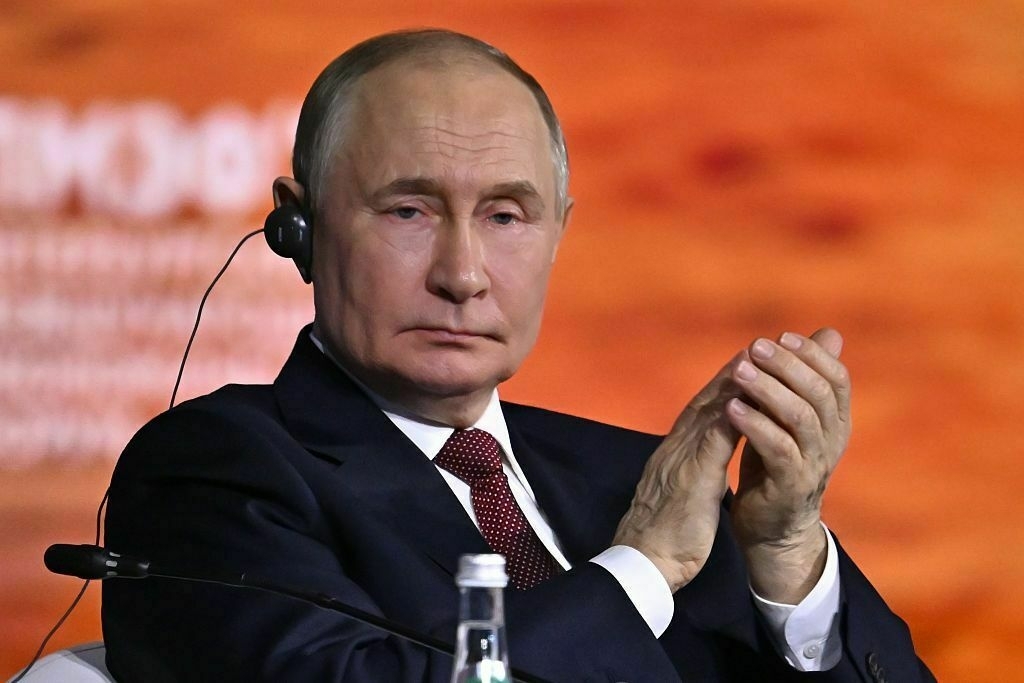
Ukrainian journalist Vladyslav Yesypenko released after four years of Russian detention

Ukrainian journalist Vladyslav Yesypenko was released on June 20 after more than four years of detention in Russian-occupied Crimea, Radio Free Europe/Radio Liberty reported.
Yesypenko, a freelance contributor to Crimea.Realities, a regional project of RFE/RL’s Ukrainian Service, reported on various issues in Crimea before being detained by Russia’s FSB in March 2021.
He was accused of espionage and possession of explosives, charges he denied, and later sentenced to five years in prison by a Russian-controlled court.
Yesypenko said he was tortured, including with electric shocks, to force a confession, and was denied access to independent lawyers for nearly a month after his arrest.
RFE/RL welcomed his release, thanking the U.S. and Ukrainian governments for their efforts. Yesypenko has since left Russian-occupied Crimea.
“Vlad was arbitrarily punished for a crime he didn’t commit… he paid too high a price for telling the truth about occupied Crimea,” said RFE/RL President Steven Kapus.
During his imprisonment, Yesypenko became a symbol of press freedom, receiving several prestigious awards, including the Free Media Award and PEN America’s Freedom to Write Award.
His case drew support from human rights groups, the National Union of Journalists of Ukraine, and international advocates for media freedom.
Russia invaded and unlawfully annexed Crimea in 2014, cracking down violently on any opposition to its regime.
Following Russia’s full-scale invasion of Ukraine in February 2022, the Kremlin toughened its grip on dissent, passing laws in March 2022 that prohibit what authorities label as “false” criticism of Russia’s war.
Crimean Tatar freed from Russian captivity: ‘Recognizing Russia’s control of Crimea would legitimize crime’For nearly two years in Russian captivity, Leniie Umerova clung to a single hope: that one day, she would return home — to Crimea. “I thought about Crimea all the time,” Umerova told the Kyiv Independent. “I dreamed of going there without the permission of the occupying forces, without going throughThe Kyiv IndependentDaria Shulzhenko
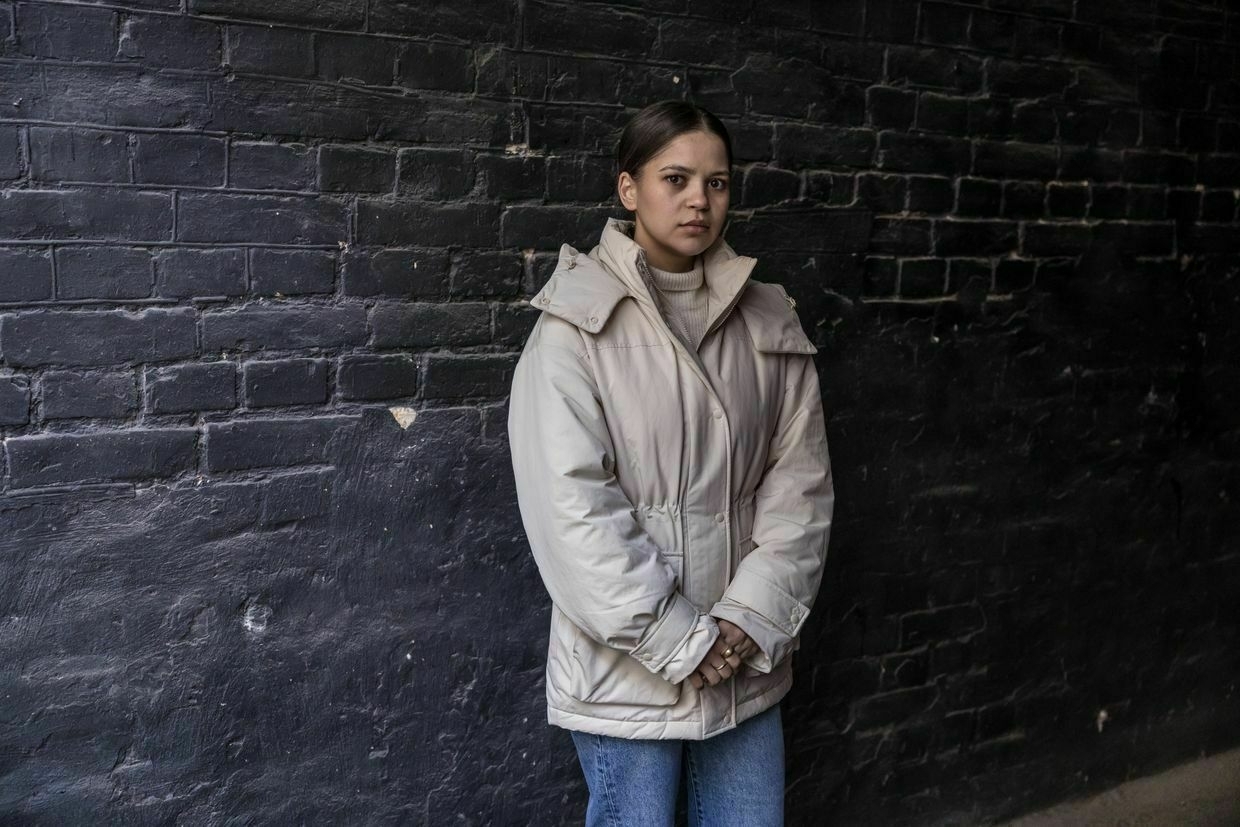
Ukraine calls for an end to Iran’s nuclear program in wake of US strikes
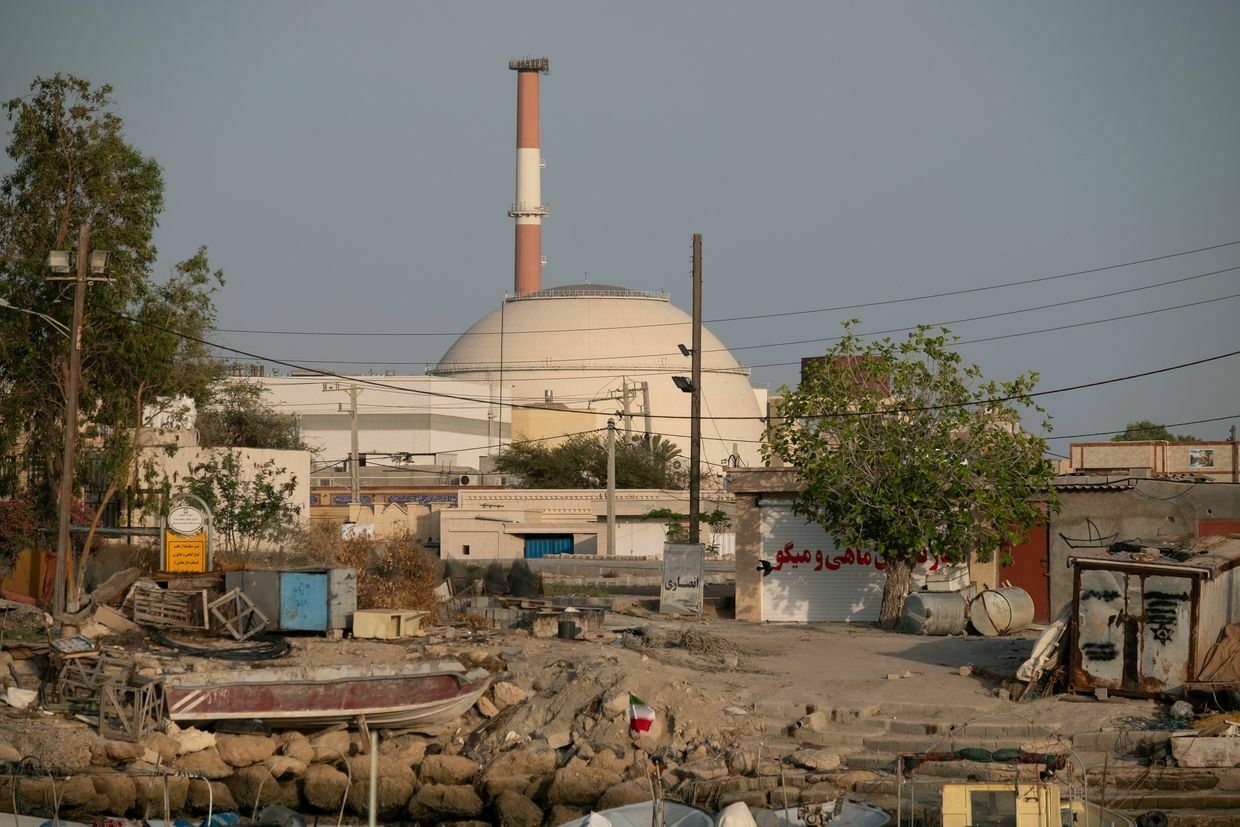
Ukraine’s Foreign Ministry said on June 22 that Iran’s nuclear program must be dismantled to prevent it from threatening the Middle East or the wider world, following U.S. air strikes on Iranian nuclear facilities.
“The Iranian regime’s aggressive actions and long-standing destructive policy aimed at undermining global peace and security – particularly its hostility toward Israel and others – have led to the current situation,” the ministry said in an official statement.
These comments come after U.S. President Donald Trump announced on June 21 that the U.S. air strikes targeted three nuclear sites in Iran, Fordow, Natanz, and Esfahan, joining Israel’s campaign against Iran’s nuclear program amid the escalating conflict in the Middle East.
The ministry added that Iran continues to destabilize the region through its support of proxy groups and is complicit in Russia’s war against Ukraine.
“Iran is complicit in the crime of aggression against Ukraine. The Iranian regime is providing military assistance to Russia, including the supply of UAVs and technologies that Russia consistently uses to kill people and destroy critical infrastructure,” the statement read.
The ministry noted that although the U.S. and other nations have made peaceful diplomatic efforts to curb Iran’s nuclear ambitions, these efforts have ultimately failed to produce meaningful results.
“As early as this spring, the United States warned Iran of the consequences in the absence of constructive steps.”
Ukraine also asserted its unique moral position on nuclear issues, having given up the world’s third-largest nuclear arsenal in the 1990s, and argued that the elimination of Iran’s nuclear ambitions would enhance global safety.
Meanwhile, Moscow has diplomatically backed Iran after Israel launched the initial air strikes against Iranian military and nuclear targets on June 13, an operation that sparked further waves of aerial attacks from both sides.
In its statement, the Russian Foreign Ministry urged a response from the U.N. Security Council, saying that “the confrontational actions of the U.S. and Israel must be collectively rejected."
Iran’s top diplomat to meet Putin in Moscow after US air strikes on nuclear sites“We enjoy a strategic partnership and we always consult with each other and coordinate our positions,” Iran’s Foreign Minister Abbas Araghchi said with reference to Russia.The Kyiv IndependentNatalia Yermak
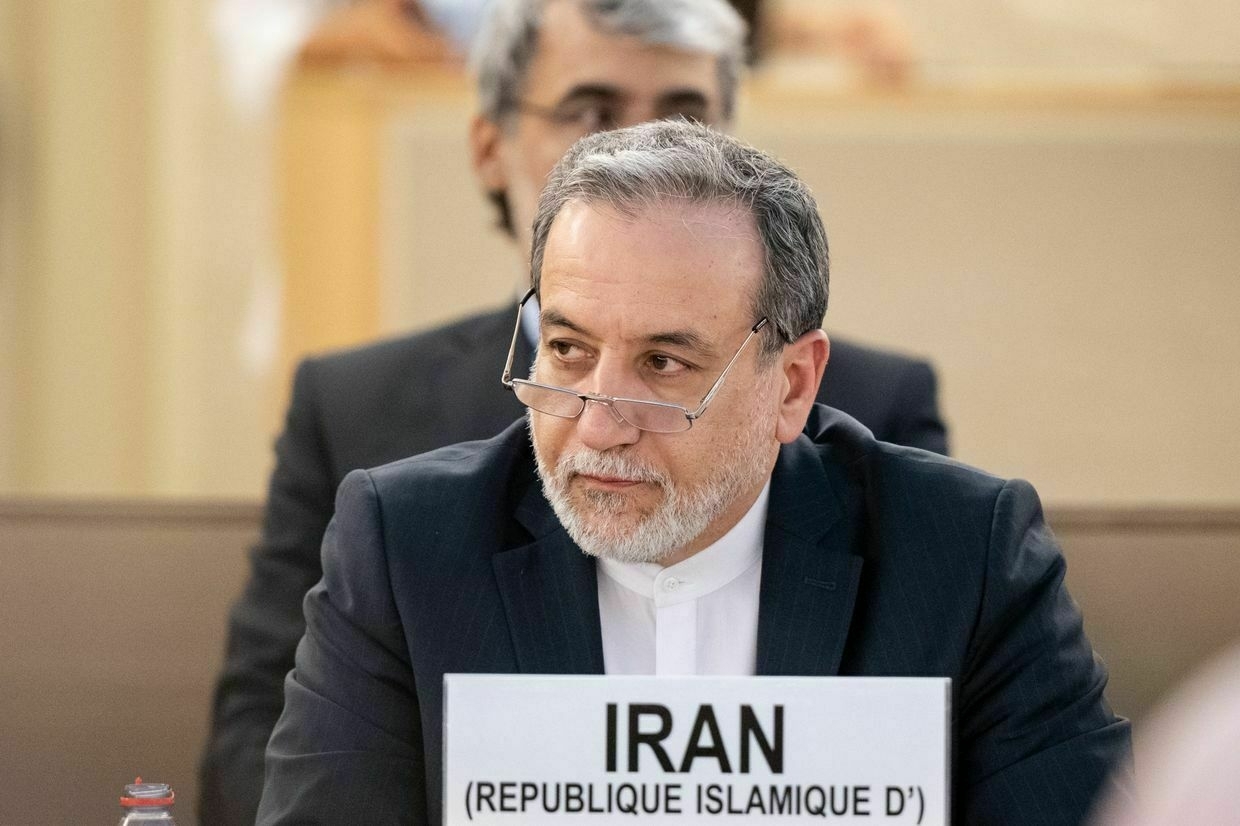
NEWSFLASH: What Trump’s Iran strikes mean for Ukraine; democracy in Iran
Editor’s Note:
Like many of you, we woke up to a new reality.
The Counteroffensive is committed to covering the human stories of people all around the world who are resisting authoritarianism.
If you think this type of journalism is valuable, support us today. We won’t be able to survive without your help!
“I'm not happy that my country is under attack,” said Maziar Mian, an architect from Iran who has built his life in Kyiv. “But I'm happy that the Islamic Republic is weakened. I'm happy that this regime could be nearing its end.”
Maziar learned the news just like the rest of us: after Donald Trump announced live to the world that the United States had launched strikes on the Iranian nuclear sites at Fordow, Natanz, and Isfahan.
Israel began targeting military and nuclear sites in Iran a week ago. Overnight, the U.S. decided to join the war, launching ‘bunker buster’ strikes on the three Iranian nuclear sites.
In America’s 21st-century Middle Eastern interventions, one pattern repeats: consequences spiral beyond control, often in ways we all fail to foresee. Tensions are now at their highest since the Cold War. Instead of ending the war in Ukraine, as he promised, Trump appears to have joined a new one.
The escalation between the U.S., Ukraine’s strongest ally, and Iran, a close Russian ally, could divert attention from the European war.
It’s a double-edged sword: Iranian supplies of missiles and kamikaze drones to Russia may slow as the theocracy seeks to tighten its grip on power. But on the other hand, the United States may now have an excuse to divert military assistance away from Ukraine, focusing instead on protecting its interests in the Middle East amid likely Iranian reprisals.
And then there is the question of what happens to the Iranian regime itself. Maziar, an Iranian pushing for a democratic future in Iran, wants to see the theocracy topple.
But strikes on foreign countries often prompt a rally-around-the-flag effect, in which governments tighten their grip on power by uniting domestic audiences against a foreign adversary. Or, the toppling of the regime could lead to an even more sinister and oppressive government – rather than one in which Iranians can freely choose their own destiny.
AFTER THE PAYWALL:
–Could this be the end of Iran’s theocratic regime? Or could hopes for Iranian democracy be dashed as the country rallies around its government?
–What the strikes against Iran mean for Ukraine as it defends itself against Iranian drones and ballistic missiles
–Could the new war over Iran provide Trump with an excuse to engage with Russia/Ukraine entirely?
Fact Check: Video Does NOT Show Lightning Bolt During Nuclear Explosion As US Bombed Iran Nuclear Plant
Does a video authentically show a lightning strike during a nuclear blast at an Iranian nuclear facility during a U.S. bombing attack on June 22, 2025? No, that's not true: While Lead Stories cannot confirm whether the video is real or AI-generated, the same video was shared online at least two days before the U.S. attack on three nuclear facilities in Iran. The video also shows a daytime scene near a city, while the American bombings happened at night and far away from any urban areas.
The claim appeared in a post (archived here) shared on the @EuromaidanPR account on X on June 22, 2025. The caption above the video read:
On June 22nd at exactly four in the morning Iran was bombed, we were told that the nuclear war had begun. Please pay attention to the Lightning!
This is the surest sign that the explosion was indeed nuclear...This is what the post looked like at the time of writing:
(Source: screenshot of X.com by Lead Stories)
The claim that this video was recorded in the early hours of June 22, 2025, in Iran was immediately suspicious because it appeared to be captured during daylight. The claim that it was related to the U.S. bombings of three Iranian nuclear facilities was also doubtful since it shows a populated urban area, and none of the targeted facilities are near cities.
Lead Stories could not conclusively say the video was generated by artificial intelligence tools. In fact, Hive Moderation's testing tools concluded the video was not made by AI.
A Google reverse image search revealed that the video predated the U.S. bombing. The same video was posted (archived here) on YouTube on June 20, 2025, with a claim that it showed an Iranian missile hitting a hospital in Haifa, Israel.
This is what that post looked like at the time of writing:
(Source: screenshot of X.com by Lead Stories)
3 killed, 11 wounded as Russia strikes Ukrainian military training facility
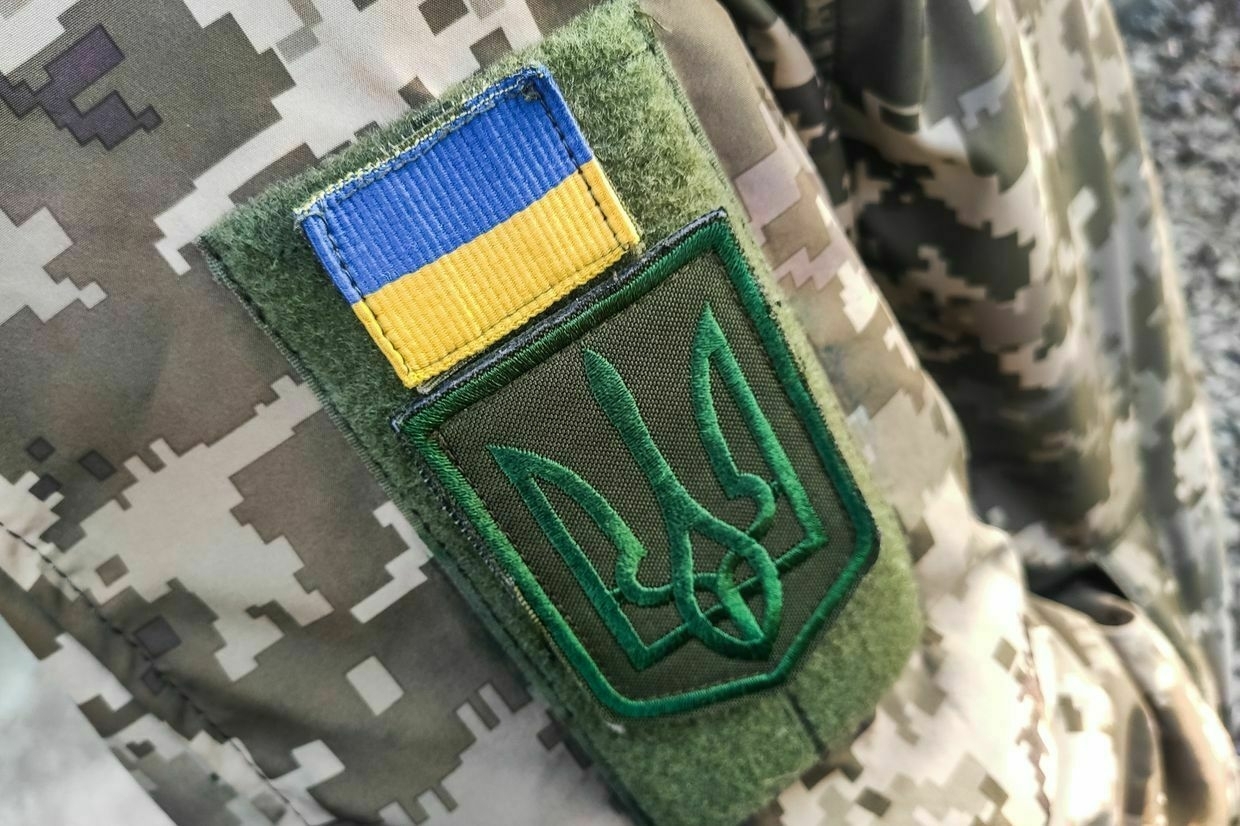
Editor’s note: This is a developing story.
Russia launched a missile attack on June 22 on the training ground of a Ukrainian mechanized brigade, where military personnel were being trained, the Ground Forces reported.
“Unfortunately, there are dead and wounded,” the statement read. The Ground Forces said that greater personnel losses were avoided thanks to the timely security measures taken when the air raid alert was issued.
Around 5:30 p.m., the Ground Forces added that three people were killed in the attack and 11 were wounded.
A special commission has been set up at the Ground Forces Command to investigate the incident, according to the statement. Law enforcement agencies are also working at the scene.
It is the second officially confirmed Russian attack in June that led to military casualties in the training facilities, adding to a chain of such attacks in the past few months.
Former Ground Forces Commander Mykhailo Drapatyi had promised to ensure new safety standards on the training grounds and hold accountable those responsible for the deaths after a Russian strike on March 1 on the training ground in Dnipropetrovsk during exercises.
Yet on May 20, another Russian missile strike against a shooting range in Sumy Oblast killed six service members and injured over 10, according to Ukraine’s National Guard.
After another Russian attack on June 1 on a Ukrainian military training ground killed 12 and injured 60, Drapatyi submitted his resignation as the Ground Forces Commander. He was appointed Commander of the Joint Forces on June 3.
Ukraine’s swift release of the statement and casualty number in the latest Russian attack stands out, as both Ukraine and Russia rarely acknowledge successful enemy attacks against their military facilities.
Ukrainian Land Forces Commander resigns after Russian attack that killed 12 soldiers on training groundMajor General Mykhailo Drapatyi submitted his resignation on June 1.The Kyiv IndependentThe Kyiv Independent news desk
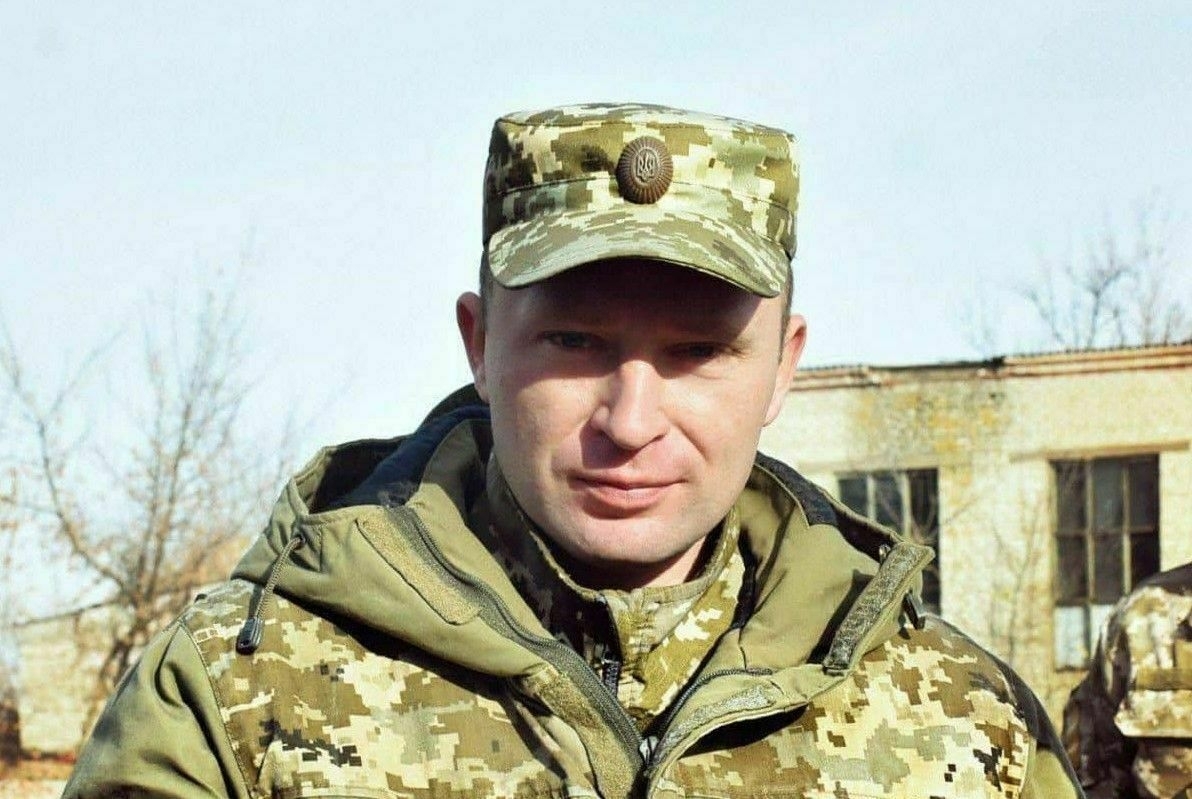
Russia preparing military operations in Europe, Zelensky says, citing intelligence
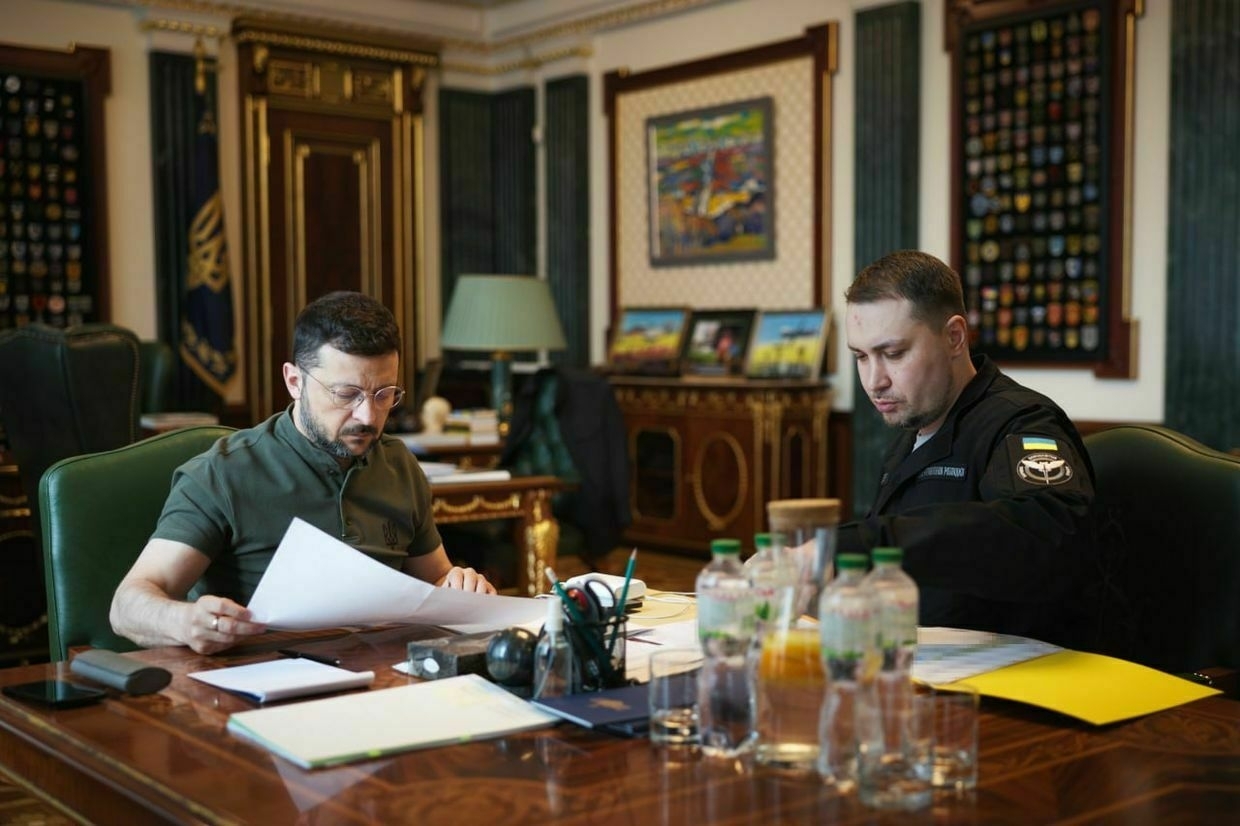
Ukrainian intelligence has proof that Russia is preparing new military operations in Europe, said President Volodymyr Zelensky on June 22 after a report from military intelligence (HUR) chief Kyrylo Budanov.
“We are observing a continued intellectual decline within the Russian leadership and have evidence that they are preparing new military operations on European territory,” Zelensky said on X.
Zelensky added that Ukraine will inform foreign partners regarding the information obtained by intelligence. The statement follows earlier warnings by Kyiv that Russia may be preparing aggression beyond Ukraine’s borders.
The president did not provide further details on the planned Russian operations, their dates, or countries that might be targeted.
“We are preparing joint decisions for defense, in particular with the United Kingdom and the European Union,” Zelensky wrote.
Zelensky confirmed that Ukraine will continue its efforts to weaken Russia’s army.
“We’re aware of… (Russia’s) key vulnerabilities and will strike accordingly to defend our state and people, as well as to significantly reduce Russia’s capacity for aggression,” the president said.
Since its full-scale invasion of Ukraine in 2022, Russia has ramped up sabotage operations across Europe, aiming to destabilize the security situation in countries supporting Kyiv against Russian aggression.
Ukrainian foreign intelligence warned in May that Russia would be able to restore its combat capabilities and launch aggression against Europe between two and four years after hostilities in Ukraine ended.
Foreign officials and EU diplomats have increasingly called for the preparation for a potential full-scale conflict between NATO and Russia. On June 2, the United Kingdom announced its largest defense spending increase since the Cold War in the face of “the war in Europe,” according to U.K. Prime Minister Keir Starmer.
Russia ‘afraid to admit’ scale of losses, trying to hide by dumping soldiers’ bodies on Ukraine, Zelensky saysUkrainian authorities have confirmed that at least 20 of the bodies Russia returned as Ukrainian were actually Russian soldiers, President Volodymyr Zelensky said.The Kyiv IndependentTim Zadorozhnyy
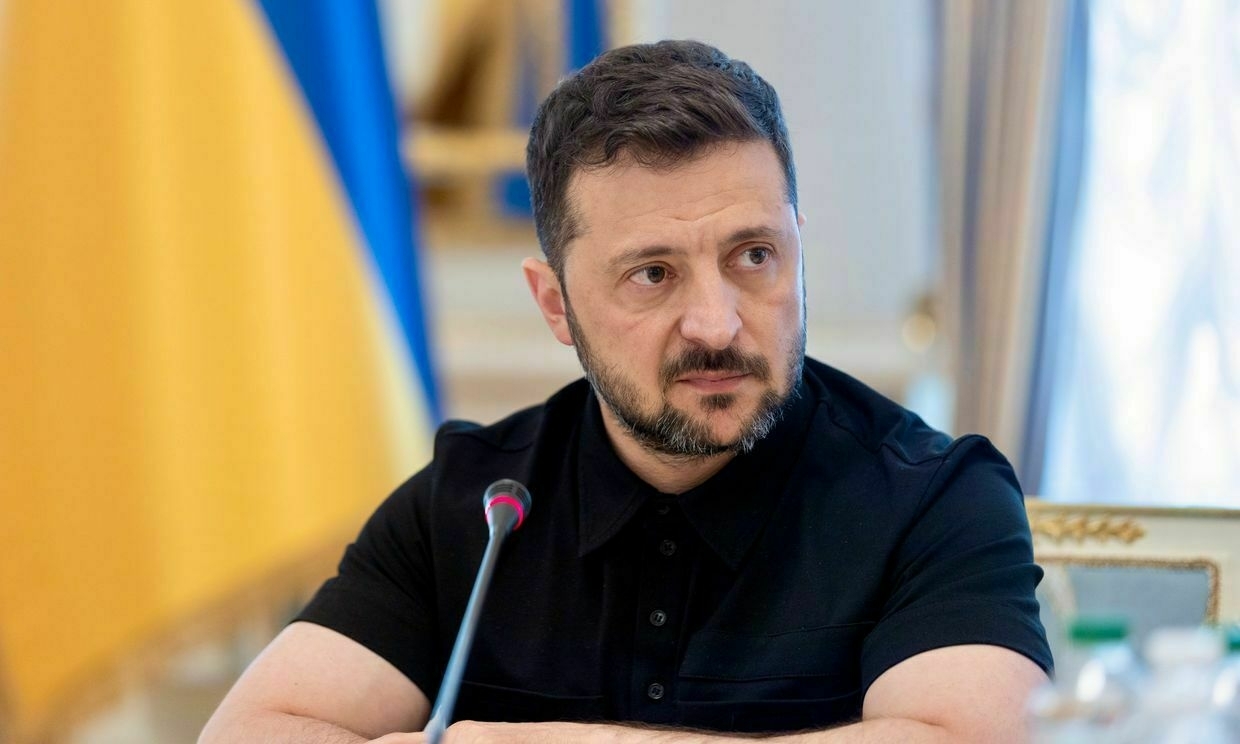
Iran-Israel implications for Ukraine | Ukraine This Week

In the latest episode of Ukraine This Week, the Kyiv Independent’s Anna Belokur breaks down the implications the burgeoning war in the Middle East may carry for Russia’s war against Ukraine, as well as a particularly cynical act of Russian torture brought to light this month.
Iran's top diplomat to meet Putin in Moscow after US air strikes on nuclear sites
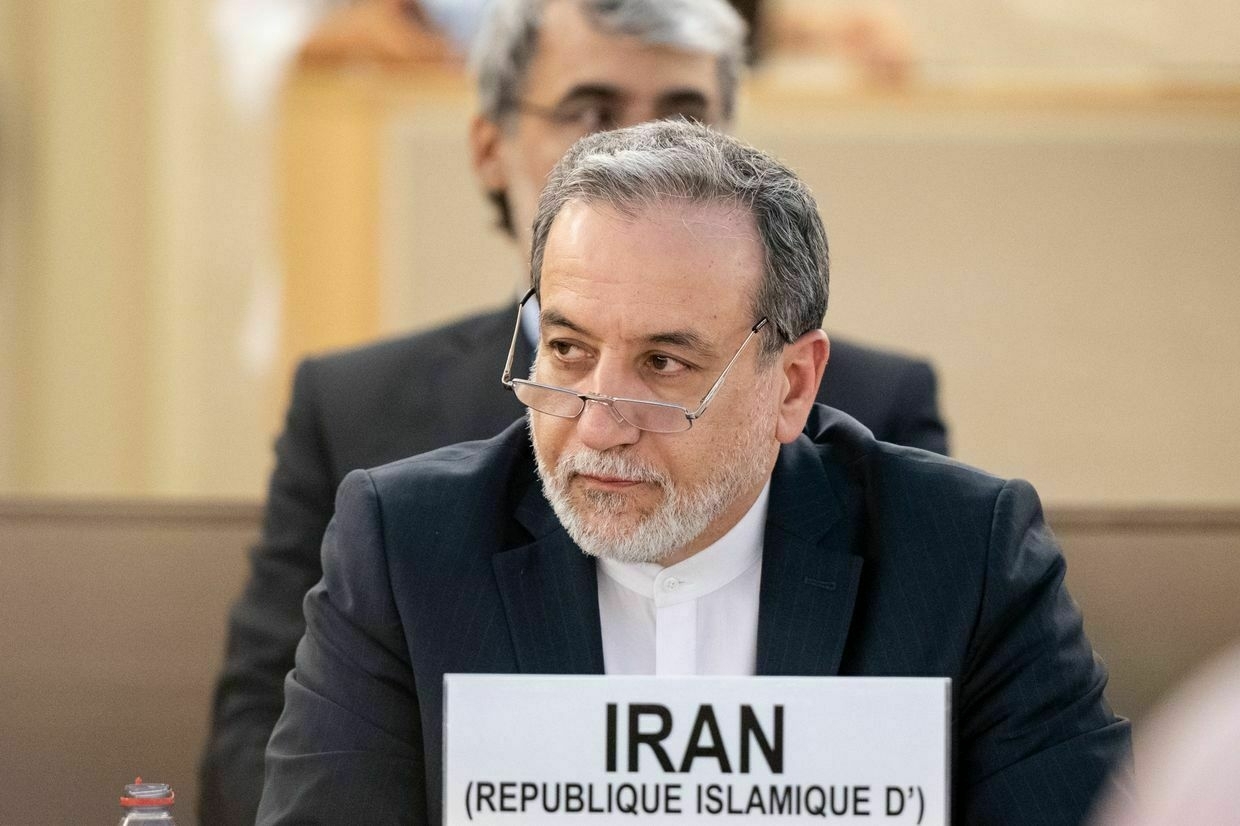
Iran’s Foreign Minister Abbas Araghchi confirmed that he plans to travel to Russia on June 22 to meet with Russian President Vladimir Putin following the recent U.S. strikes on Iranian nuclear facilities.
The statement was made during Araghchi’s press conference in Istanbul on June 22, according to Associated Press.
“We enjoy a strategic partnership and we always consult with each other and coordinate our positions,” Araghchi said with reference to Russia.
Araghchi also said that there is “no red line” that the U.S. has not crossed in its recent actions against Iran.
Earlier that day, Russia condemned the U.S. strikes against Iranian nuclear facilities, calling them a violation of international law and Iran’s sovereignty, a statement in stark contrast to Russia’s full-scale war against Ukraine.
The Russian Foreign Ministry urged a response from the U.N. Security Council, saying that “the confrontational actions of the U.S. and Israel must be collectively rejected."
Tehran provides Moscow with ballistic missiles and thousands of Shahed attack drones for its war against Ukraine as part of Russia and Iran’s close strategic partnership.
Russia and Iran have cooperated to develop their own nuclear programs as both countries face Western sanctions. Russia supplied Iran with the Middle East’s first nuclear power plant despite objections from the West.
Russia pulls its scientists out of Iranian nuclear plant, as Israeli strikes threaten decades of collaborationIsrael’s strikes on Iranian nuclear facilities have alarmed none more than Russia, the country that first brought nuclear power to Iran in defiance of Western objections. We’re “millimeters from catastrophe,” said Kremlin spokeswoman Maria Zakharova on June 18 in response to a bombing campaign that Israel launched againstThe Kyiv IndependentKollen Post
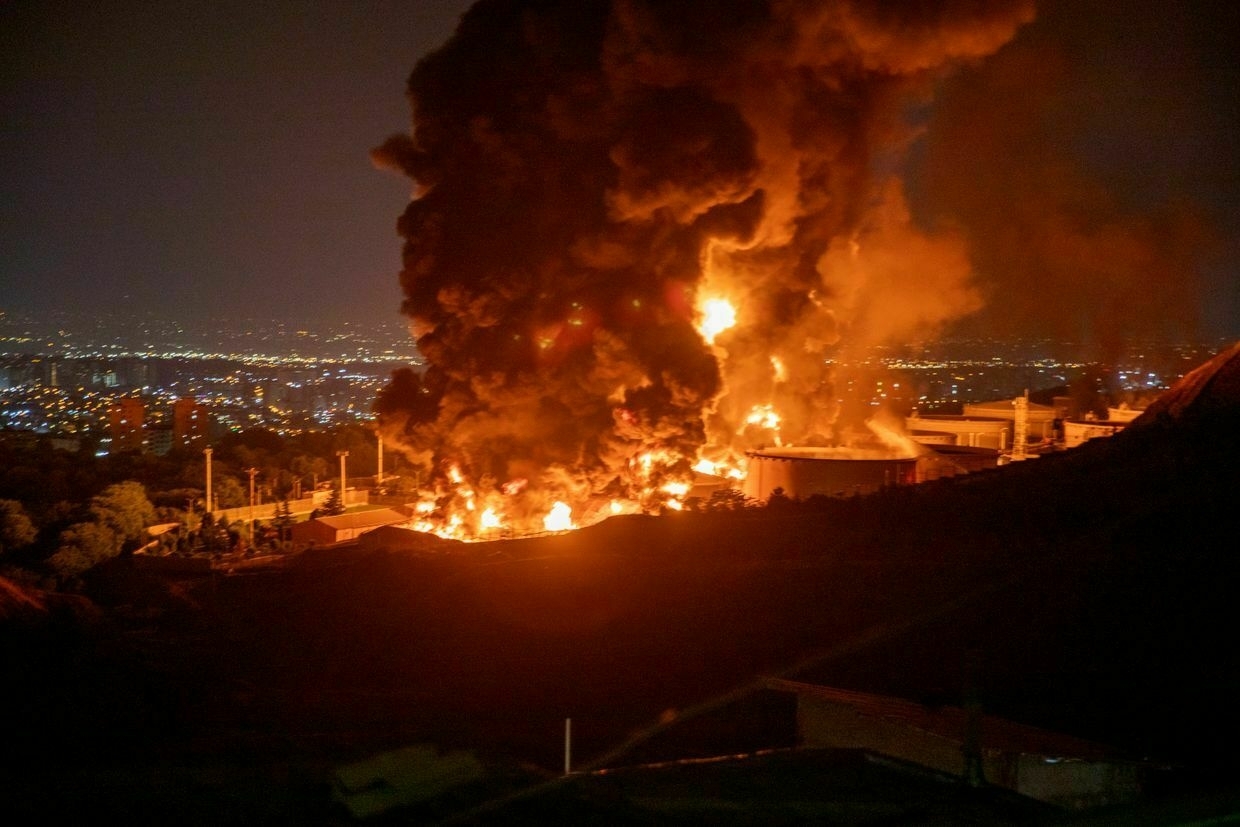
Trump could free all Belarus's political prisoners 'with a single word,' released oppositionist Tsikhanouski says
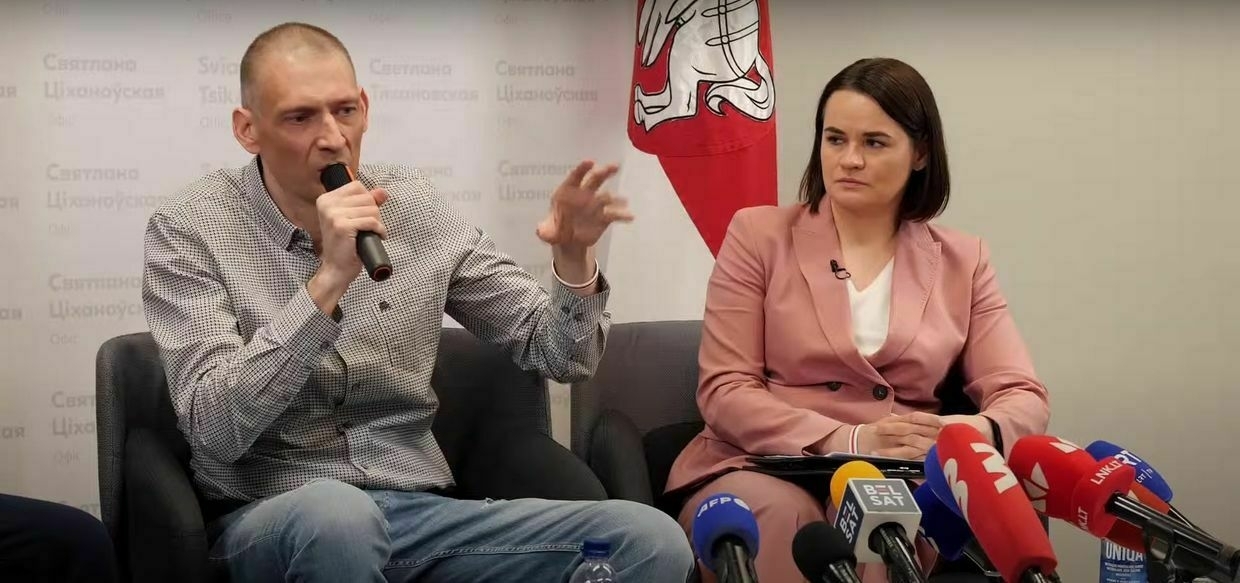
Siarhei Tsikhanouski, a Belarusian oppositionist recently released from prison, thanked the U.S. on June 22 for brokering his release and appealed to President Donald Trump to help free other political prisoners in Belarus.
“President Trump now has the power and opportunity to free all political prisoners in Belarus with a single word. And I ask him to do so, to say that word,” Tsikhanouski said in Vilnius during his first press conference after the release.
Tsikhanouski, a popular blogger who planned to challenge Belarusian dictator Alexander Lukashenko in the 2020 presidential election, was arrested shortly before the vote and later sentenced to 18 years in prison on politically motivated charges.
The opposition leader and at least 13 other detainees were released from Belarusian prisons on June 21 after Lukashenko met U.S. Special Envoy for Ukraine, Keith Kellogg, in Minsk.
Speaking at the press conference alongside his wife and opposition leader, Sviatlana Tsikhanouskaya, Tsikhanouski affirmed that both of them “will continue to support Ukraine and call all of the perpetrators accountable."
Tsikhanouski confirmed that he used to do business both in Ukraine and in Russia but refuted allegations of pro-Russian sympathies, affirming his support for Ukraine and President Volodymyr Zelensky.
“I believe Crimea is Ukrainian. Zelensky has the hardest fate and a heavy load that no other president has. Zelensky is my hero,” Tsikhanouski said.
He also said that Sviatlana Tsikhanouskaya remains the leader of the Belarusian opposition, and he will not challenge that.
Tsikhanouskaya stepped in as the opposition candidate in 2020 after her husband’s arrest, but was forced into exile after Lukashenko declared victory in what was broadly seen as massive election fraud.
“Do you think that anybody who serves in prison automatically becomes a leader? We have 1,200 such leaders,” Tsikhanouski added, referring to the number of political prisoners who remain in prison under Lukashenko’s regime.
“Belarus can’t be free until the Putin regime collapses. If it wasn’t for (Russian President Vladimir) Putin, we would not be sitting here; it would have been over (after the Belarus' popular protests against Lukashenko) in 2020-2021,” Tsikhanouski said.
Lukashenko, in power since 1994, is a close ally of Putin and has allowed Russia to use Belarusian territory for military operations against Ukraine.
The Belarusian dictator has maintained a tight grip over his country by electoral fraud, surveillance, and brutal crackdown on free press, civil society, and political opposition, prompting Western countries to impose sanctions on Belarus.
Russia ‘afraid to admit’ scale of losses, trying to hide by dumping soldiers’ bodies on Ukraine, Zelensky saysUkrainian authorities have confirmed that at least 20 of the bodies Russia returned as Ukrainian were actually Russian soldiers, President Volodymyr Zelensky said.The Kyiv IndependentTim Zadorozhnyy
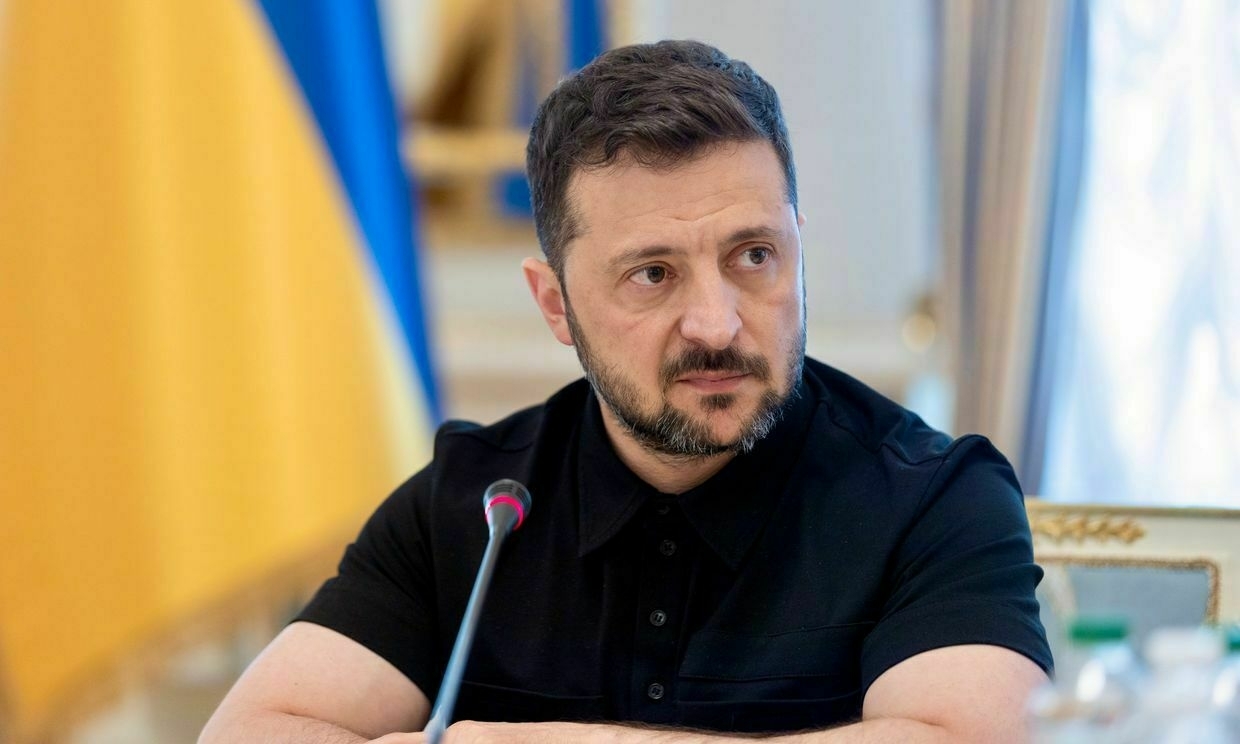
Zelensky slaps new sanctions over business activities in Russian-occupied territories of Ukraine
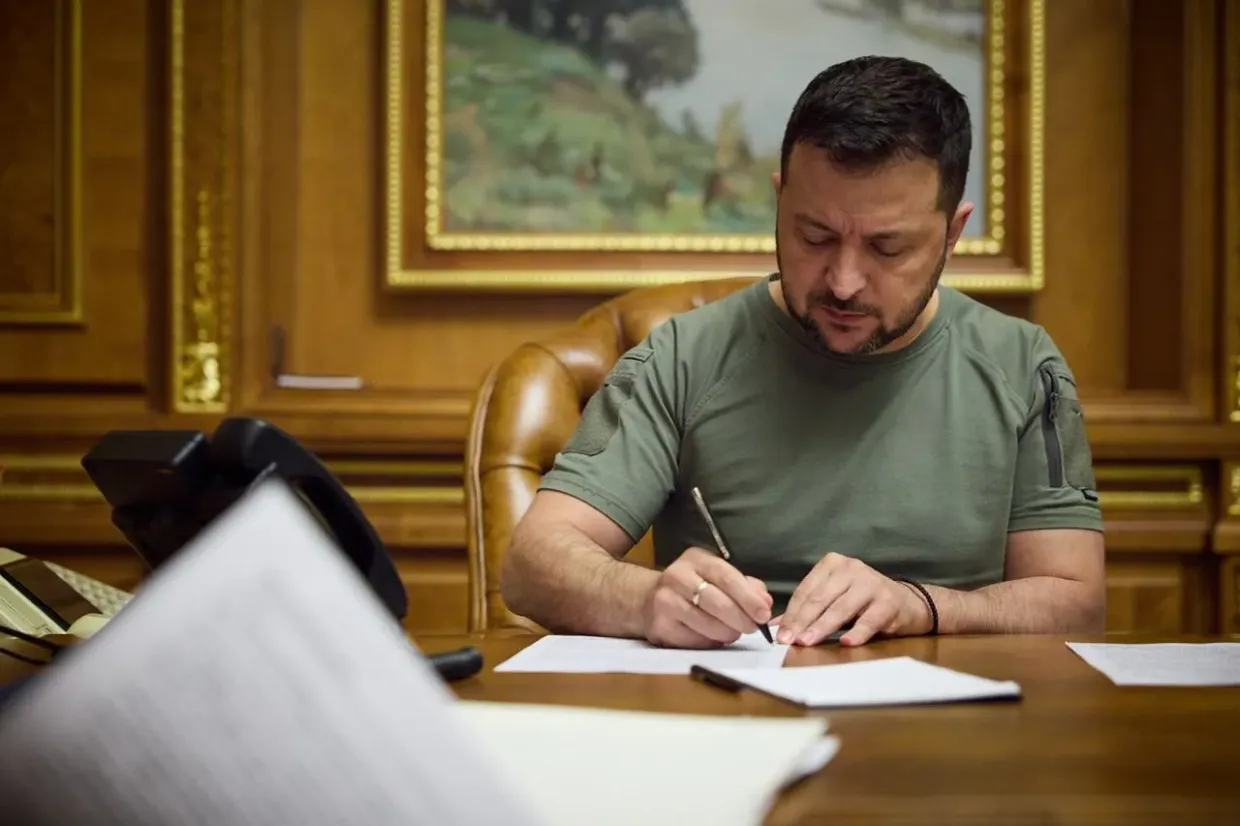
President Volodymyr Zelensky signed an order on June 22 to impose sanctions on individuals and legal entities doing business in the Russian-occupied territories of Ukraine, including Crimea.
According to Zelensky, the sanctions are targeting “those who cooperate with the (Russian) occupier on our land,” as they “help justify the aggression, consider it normal to make money in the occupation, and pay taxes” to Russia.
The order, which follows a decision of Ukraine’s National Security and Defense Council, was published on the Presidential Office’s website together with the lists of sanctioned individuals and companies.
The order is only the beginning of a larger plan for sanctions against such individuals, with more steps coming soon, Zelensky wrote.
According to Zelensky, Ukrainian authorities are also working to fully synchronize Ukrainian sanctions with the steps by foreign partners.
“Justice must prevail in all jurisdictions and truly restrict all those who choose Russia and war,” he added.
The lists of sanctioned individuals and companies published on the Presidential Office’s website did not clarify the nature of their business activities or collaboration with the Russian occupation authorities and state.
The list includes lawmaker Artem Dmytriuk, who fled Ukraine in August 2024 and is suspected of assaulting a police officer and a military service member.
Fugitive ex-lawmaker Oleksandr Onyshchenko, who was sentenced in absentia to 15 years in prison for large-scale fraud in the gas sector between 2013 and 2016, is also among the newly sanctioned individuals.
Arricano Real Estate PLC, which owns several large shopping malls in Kyiv and other Ukrainian cities, was also sanctioned together with its former majority auctioneer, Estonian businessman Hillar Teder. Until 2024, Arricano’s shareholders included Dragon Capital, Ukraine’s largest investment company owned by Czech businessman Tomas Fiala.
Ukrainian laws on collaboration had long raised discussions among members of the public, academics, and practitioners.
According to an article from 2024 by the Zmina Human Rights Center, Ukraine’s law recognizes doing business in occupied territories as a crime of collaboration. Human rights defenders have conducted research that has highlighted the law’s flaws and problems with its application.
A 2023 report by the Ukrainian Helsinki Human Rights Union said that enacting legal consequences for collaboration according to the law could breach the International Human Rights Conventions in some cases.
“The law does not take into account cases when a person conducts economic activities to cover the basic needs of his or her family or when such activities support the livelihood of the population under occupation,” the Zmina Human Rights Center wrote.
Russia ‘afraid to admit’ scale of losses, trying to hide by dumping soldiers’ bodies on Ukraine, Zelensky saysUkrainian authorities have confirmed that at least 20 of the bodies Russia returned as Ukrainian were actually Russian soldiers, President Volodymyr Zelensky said.The Kyiv IndependentTim Zadorozhnyy
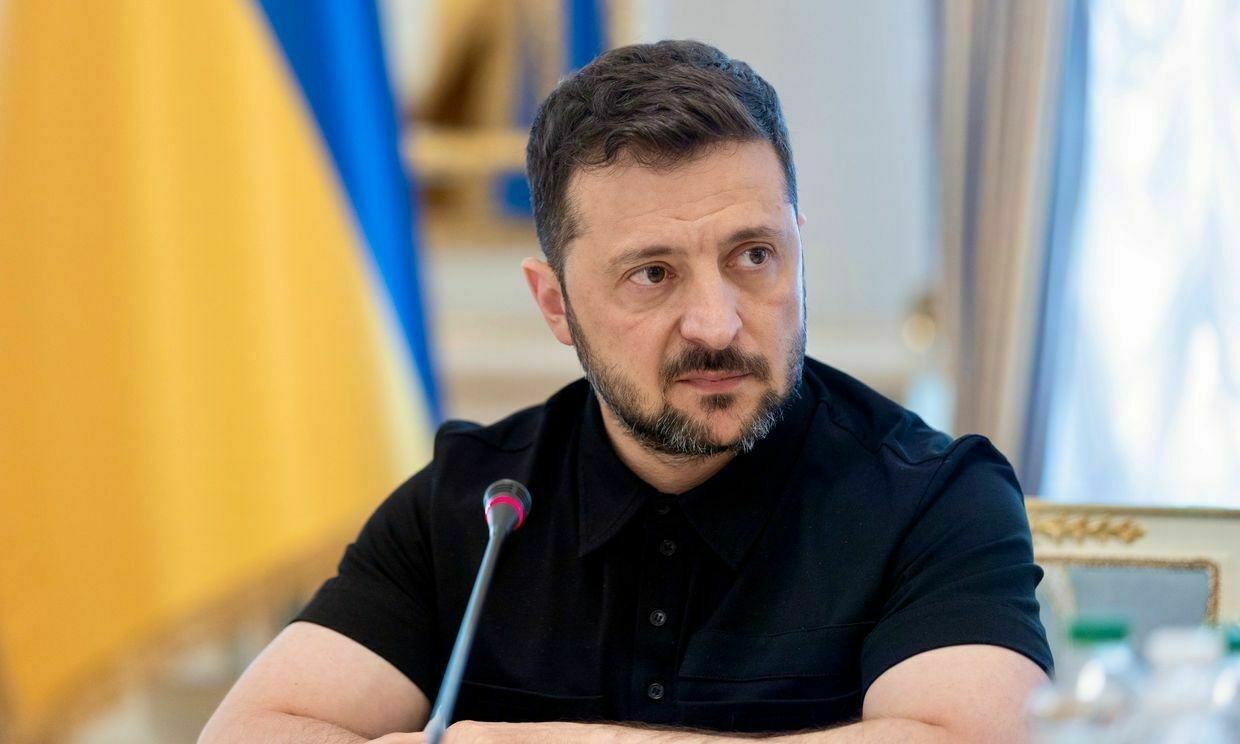
Ukraine evacuates 176 citizens, foreigners from Israel ahead of US strikes on Iran, Zelensky says
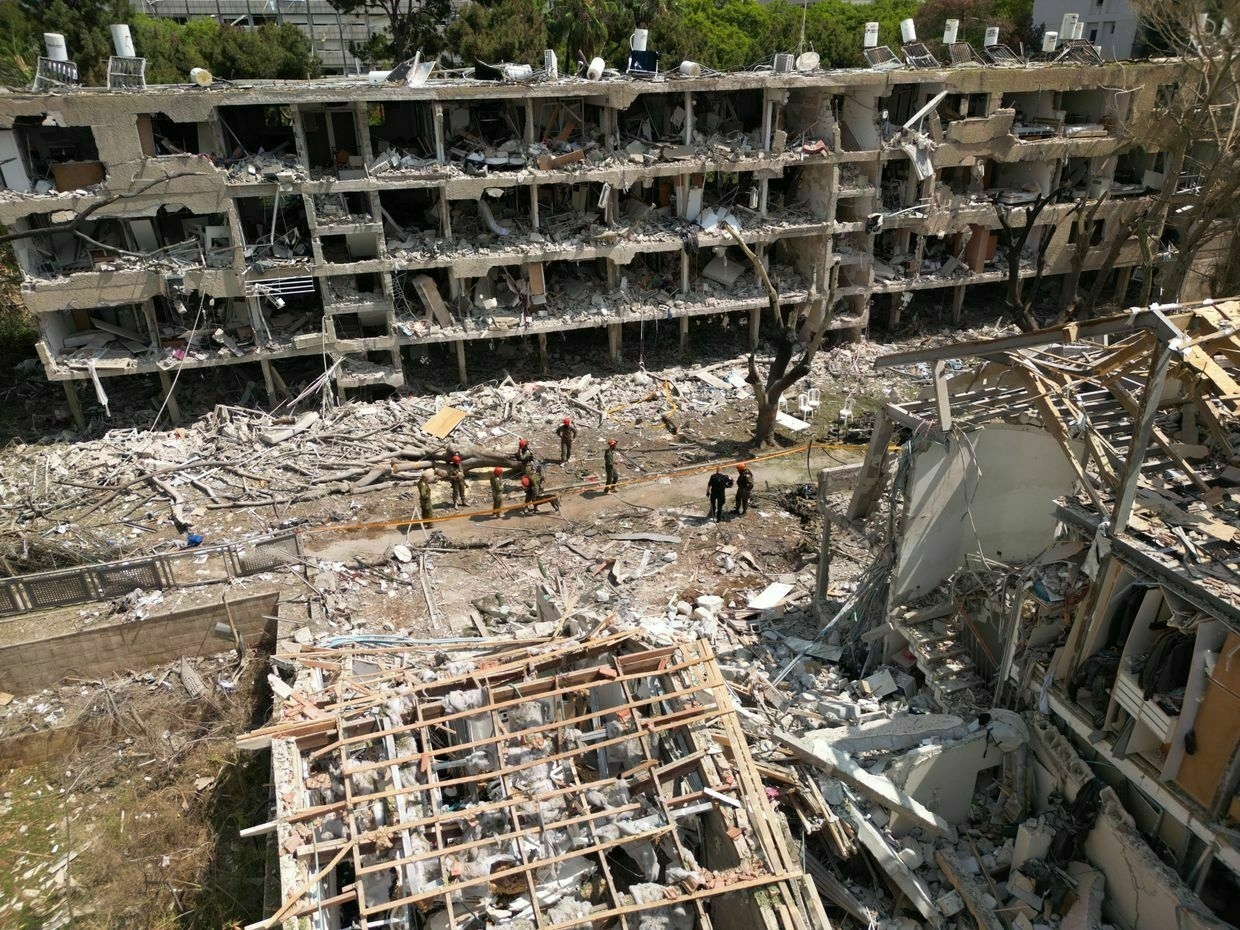
Ukraine’s diplomatic corps and military intelligence (HUR) evacuated 176 Ukrainian and foreign citizens from Israel to Egypt ahead of U.S. attacks on Iran, President Volodymyr Zelensky announced on June 22.
“Evacuation efforts are also ongoing from Iran to Azerbaijan,” Zelensky said on X after the U.S. launched air strikes against three Iranian nuclear facilities, joining Israel’s campaign against Iran’s nuclear program.
The foreign nationals evacuated by Ukraine included citizens of the U.S., Moldova, Latvia, Azerbaijan, and Estonia.
“We are responding to every request and will continue evacuation efforts,” Zelensky added.
The latest chapter of hostilities between Iran and Israel began with Israeli air strikes against the Iranian nuclear program and military leaders on June 13. Israel has accused Iran of developing a nuclear weapon, a claim that Tehran denied.
U.S. President Donald Trump reportedly hopes that the U.S. attacks will push the Iranian leadership to the negotiating table, as the conflict was preceded by Trump’s efforts to find a diplomatic solution to Tehran’s nuclear aspirations.
Ukraine’s Foreign Ministry announced already on June 18 that evacuations of Ukrainian citizens from Iran and Israel are being prepared.
According to the Iranian Health Ministry, over 400 Iranians have been killed and over 3,000 wounded in Israeli attacks. In turn, at least 29 Israeli citizens have been killed and 900 injured in Iranian attacks.
Russia pulls its scientists out of Iranian nuclear plant, as Israeli strikes threaten decades of collaborationIsrael’s strikes on Iranian nuclear facilities have alarmed none more than Russia, the country that first brought nuclear power to Iran in defiance of Western objections. We’re “millimeters from catastrophe,” said Kremlin spokeswoman Maria Zakharova on June 18 in response to a bombing campaign that Israel launched againstThe Kyiv IndependentKollen Post
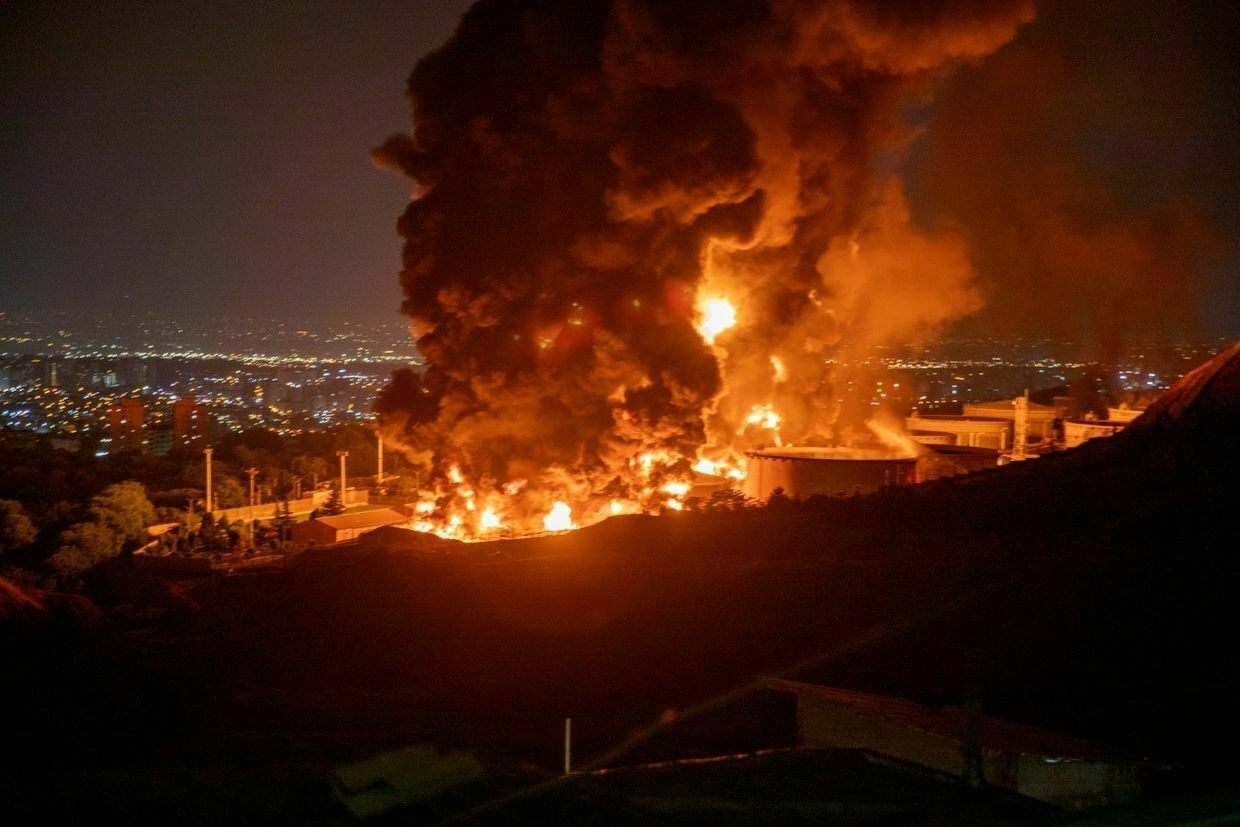
Over 450 draft officers, staff transferred in response to reported abuses, Ukraine's military chief says
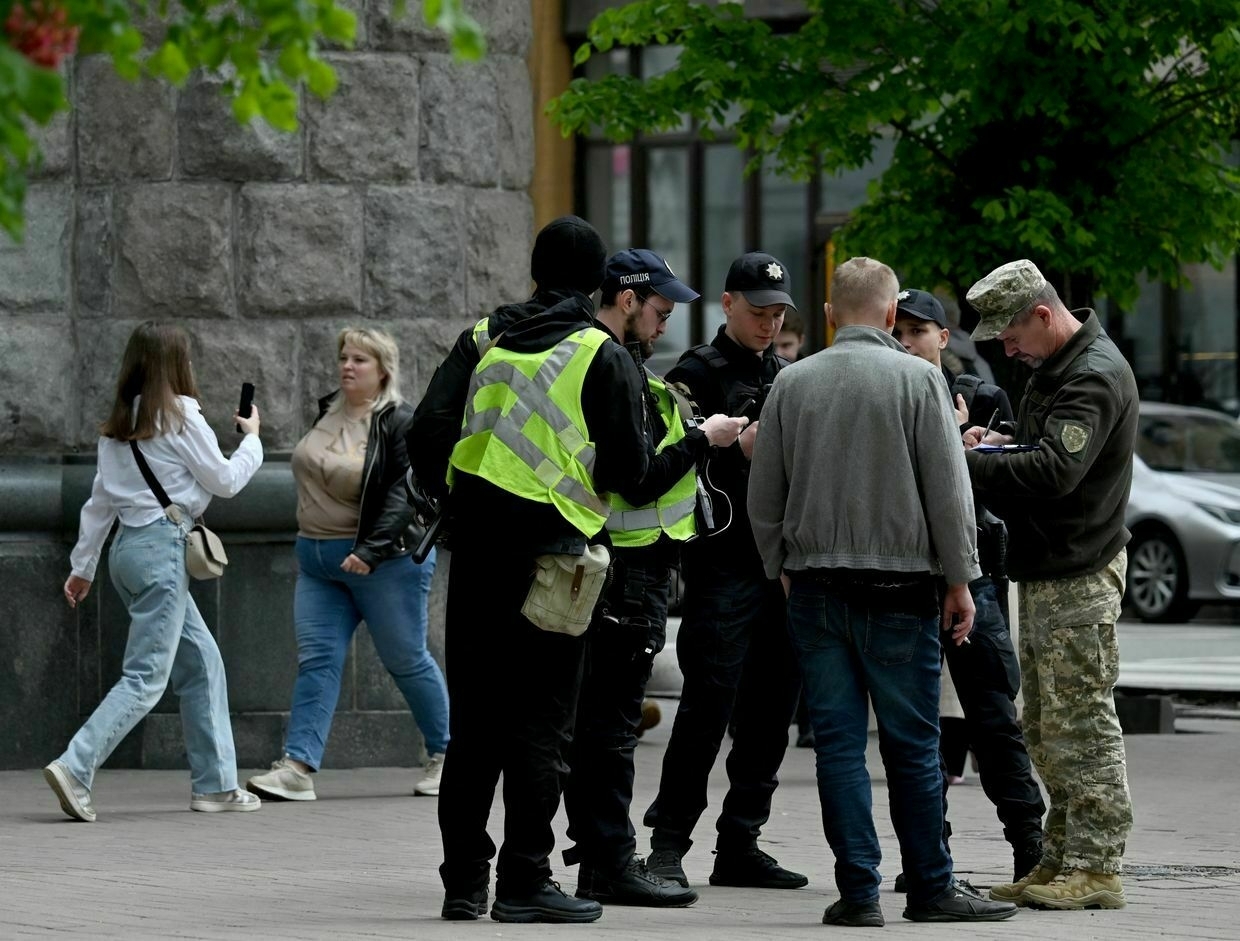
The Ukrainian military leadership aims to overhaul the draft office system amid numerous reports of abuses since the start of Russia’s invasion in 2022, Commander-in-Chief Oleksandr Syrskyi told journalists on June 21.
To “clean up the system”, 136 officers and 325 other service members from the draft offices involved in misconduct were transferred to other positions in the army, Syrskyi said at a briefing attended by the Kyiv Independent.
Mobilization of men through the draft offices remains the main source of manpower for the Ukrainian army which defends against Russia’s much more numerous forces in a war of attrition, Syrskyi added.
Draft offices are often accused, at times justly, of forced conscription without compliance with fundamental civil rights and ill-treatment of conscripts in recruitment centers. These reports are used by Russian propaganda to help escalate social tensions in Ukraine and further damage Ukraine’s recruitment efforts.
“Cases of forced detention of citizens (by the draft officers) are absolutely unacceptable,” Syrskyi said during the briefing.
Ukrainian leadership expects the newly appointed commander of Ukraine’s Ground Forces, Brigadier General Hennadii Shapovalov, to “overcome problematic issues,” Syrskyi added.
Shapovalov’s appointment on June 17 followed the resignation of Mykhailo Drapatyi earlier this month after a Russian missile strike killed at least 12 Ukrainian soldiers at a training ground in Dnipropetrovsk Oblast.
Inspections are underway in the draft centers to send draft officers without battlefield experience to the front, replacing them with soldiers wounded in battles, Syrskyi said.
Draft offices should fulfill their duties and “disallow these shameful cases that sometimes occur,” according to Syrskyi.
“Corrupt officials and violators of the law in the mobilization process must be exposed. All necessary measures should be taken against such violators,” Syrskyi added.
Ukraine is failing the mobilization testUkrainian society largely does not want to mobilize. Nearly 6 million Ukrainian men have not updated their information in military enlistment centers, and most of them likely don’t have grounds for a deferment or exemption. Forced mobilization of these men is categorically opposed by society. Rosy-cheeked aunts gather and shoutThe Kyiv IndependentIllia Krotenko
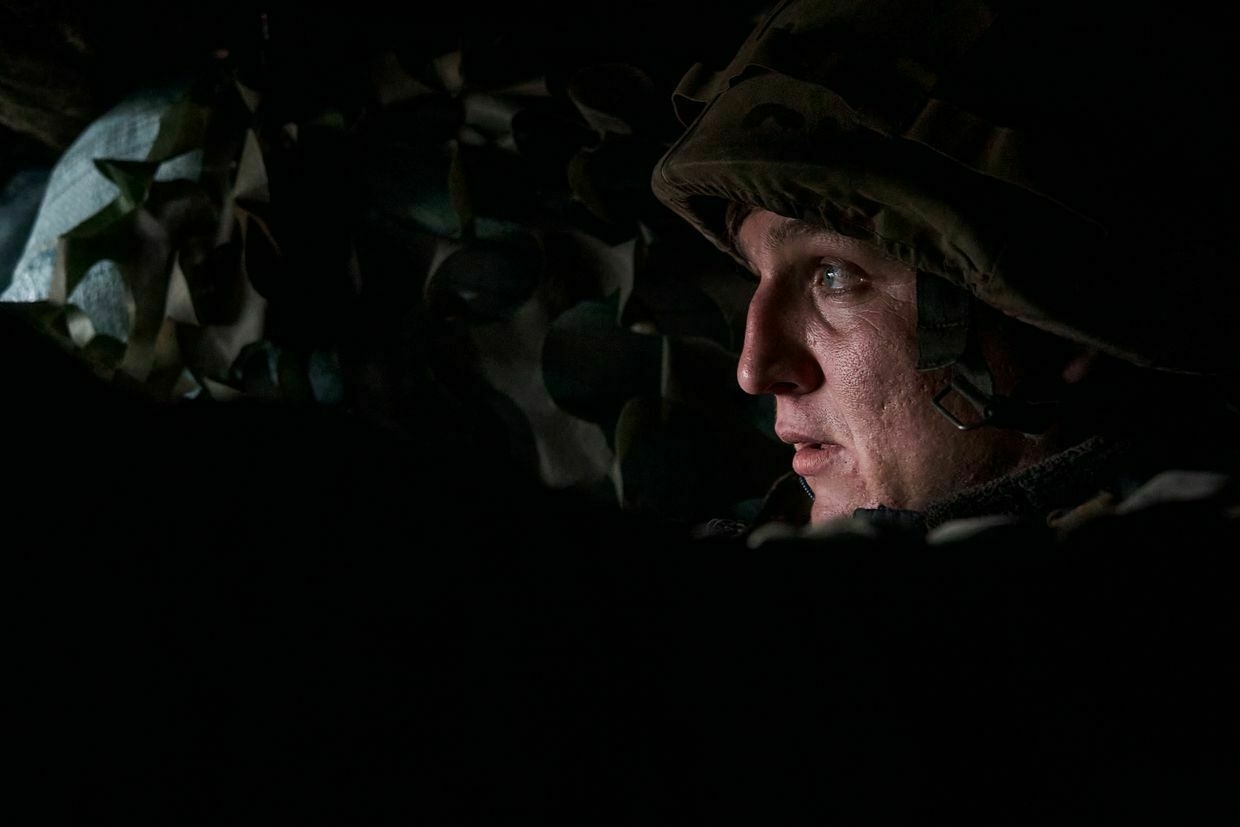
Amid its war against Ukraine, Russia condemns US strikes on Iran as 'violating international law'
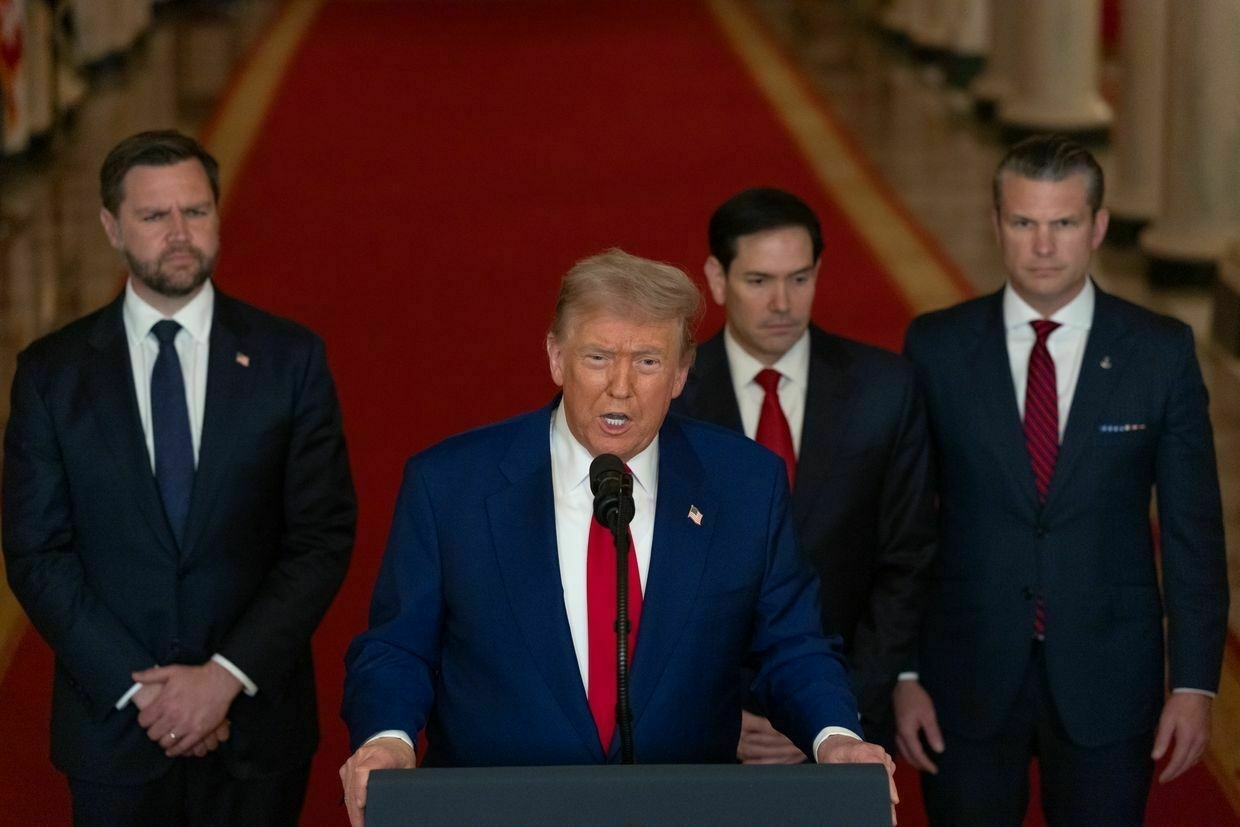
Moscow condemned on June 22 the recent U.S. strikes against Iranian nuclear facilities, calling them a violation of international law and Iran’s sovereignty, a statement in stark contrast to Russia’s full-scale war against Ukraine.
U.S. President Donald Trump announced on June 21 that the U.S. air strikes targeted three nuclear sites in Iran, namely Fordow, Natanz, and Esfahan, joining Israel’s campaign against Iran’s nuclear program amid an escalating conflict.
“The irresponsible decision to subject the territory of a sovereign state to missile and bomb strikes, no matter what arguments are used, is grossly violating international law, the U.N. Charter, and the resolutions of the U.N. Security Council,” the Russian Foreign Ministry said in a statement.
The ministry also warned of possible radiological consequences, despite Moscow’s own record of repeatedly placing nuclear facilities at risk during its full-scale invasion of Ukraine and threatening to use nuclear weapons.
Russia and Iran are close strategic partners, with Tehran providing Moscow with ballistic missiles and thousands of Shahed attack drones for its war against Ukraine.
Moscow has diplomatically backed Iran after Israel launched the initial air strikes against Iranian military and nuclear targets on June 13, an operation that led to further waves of aerial attacks from both sides.
In its statement, the Russian Foreign Ministry urged a response from the U.N. Security Council, saying that “the confrontational actions of the U.S. and Israel must be collectively rejected."
“Of particular concern is the damage caused by the attacks on Iranian nuclear facilities to the global non-proliferation regime based on the Treaty on the Non-Proliferation of Nuclear Weapons (NPT)."
Israel has increasingly warned that Iran is developing a nuclear weapon, an assertion backed by Trump despite U.S. intelligence previously disputing the claim. Tehran has rejected having a nuclear weapons program.
Though Trump announced a complete “obliteration” of Iran’s nuclear enrichment facilities in the recent attacks, the scale of damage is not immediately clear. The International Atomic Energy Agency (IAEA) said it had detected no increase in radiation at the targeted sites, while the Iranian state media and officials sought to downplay the damage.
Iran has called for an emergency meeting of the U.N. Security Council in the wake of the attacks. Both the U.S. and Russia hold a permanent seat and a veto power in the council.
Israeli Prime Minister Benjamin Netanyahu praised Trump for the operation, saying, “First comes strength, then comes peace. And tonight, (President Donald) Trump and the United States acted with a lot of strength.
In turn, Iran’s Foreign Minister Abbas Araqchi said that the U.S. “has committed a grave violation of the U.N. Charter, international law and the NPT by attacking Iran’s peaceful nuclear installations."
Washington’s European partners have issued cautious responses to the U.S. attacks, calling for a diplomatic resolution.
“Iran must not be allowed to develop a nuclear weapon, as it would be a threat to international security,” top EU diplomat Kaja Kallas said on X.
“I urge all sides to step back, return to the negotiating table, and prevent further escalation."
Russia pulls its scientists out of Iranian nuclear plant, as Israeli strikes threaten decades of collaborationIsrael’s strikes on Iranian nuclear facilities have alarmed none more than Russia, the country that first brought nuclear power to Iran in defiance of Western objections. We’re “millimeters from catastrophe,” said Kremlin spokeswoman Maria Zakharova on June 18 in response to a bombing campaign that Israel launched againstThe Kyiv IndependentKollen Post
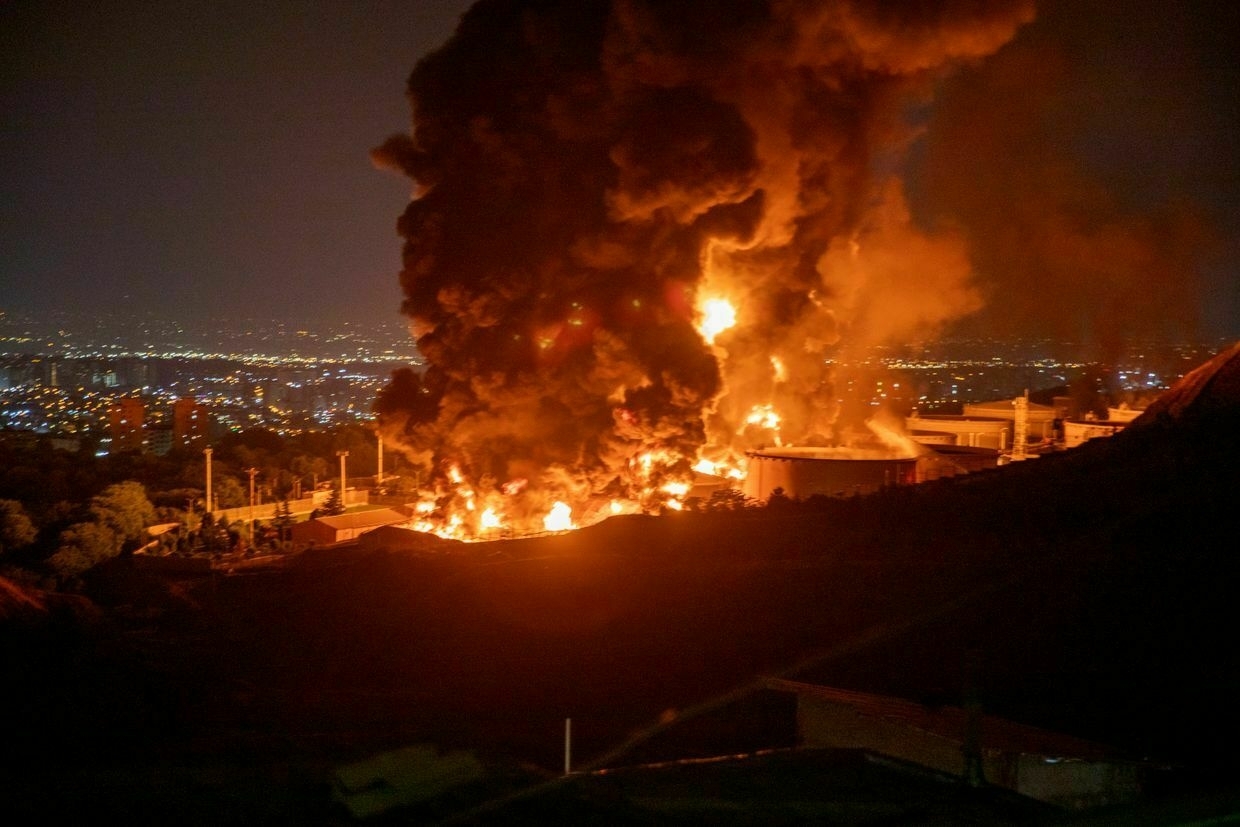
Ukraine destroys 80% of Russian drones despite air defense missile shortage, Syrskyi says
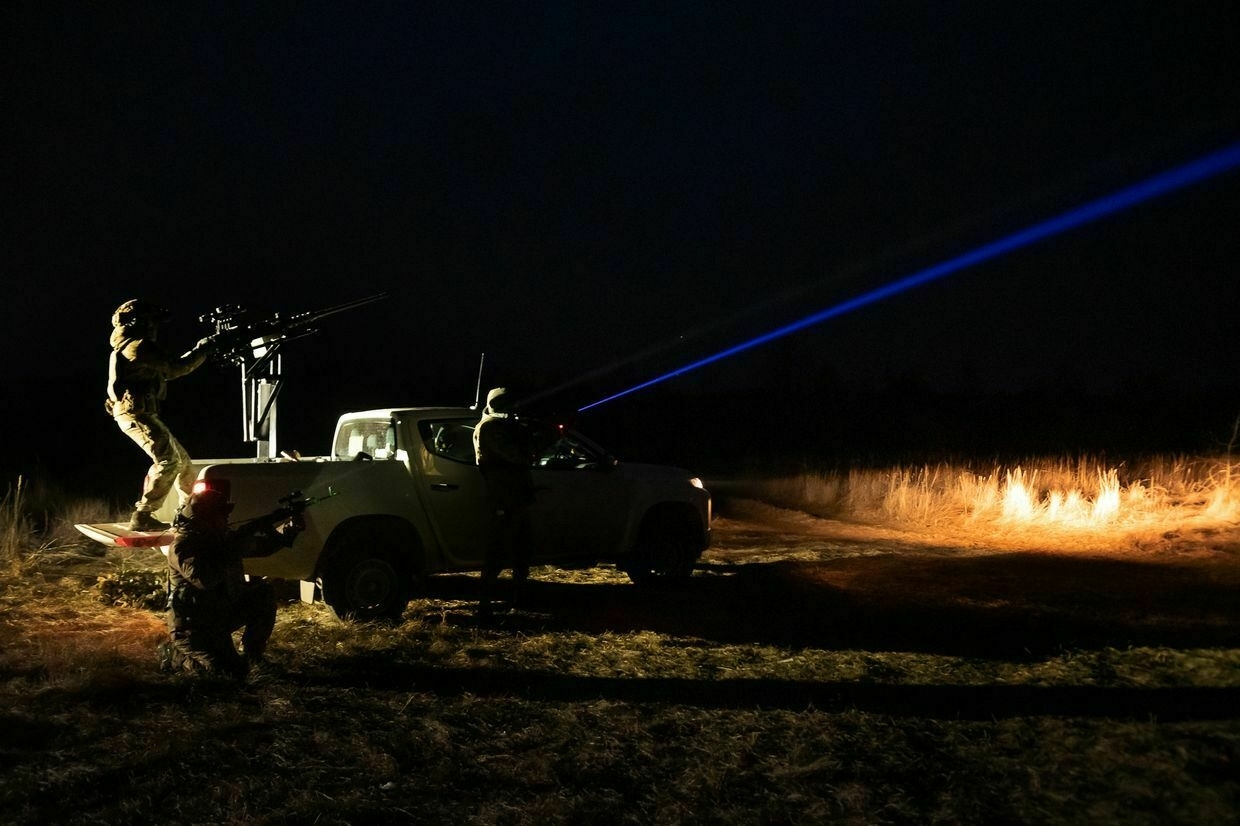
Ukraine is downing approximately 82% of Russian Shahed-type drones during Russian massive aerial attacks on Ukrainian cities despite a serious shortage of surface-to-air missiles, Commander-in-Chief Oleksandr Syrskyi told journalists on June 21.
Ukraine needs to have many times more surface-to-air missiles and anti-aircraft missile systems to ensure reliable defense of cities and critical infrastructure facilities, Syrskyi said at a briefing attended by the Kyiv Independent.
Russian attacks against Ukraine have surged in May and June as Moscow has launched several record-breaking mass strikes against Kyiv and other cities. The latest attack on June 17, primarily targeting the capital, killed 30 people and injured over 170.
“Since we have to save anti-aircraft guided missiles, mobile fire groups are the priority for defending from the Shaheds,” Syrskyi said.
Despite Russia’s changing tactics of massive air attacks, mobile fire groups account for the largest share of destroyed drones. The fire groups' effectiveness is up to 40%, according to Syrskyi.
Aviation is used almost every night to repel Russian air attacks, featuring the Defense Forces' helicopter crews and fighter aircraft of the Air Force, which includes U.S.-made F-16 and French Mirage-2000 aircraft.
“One promising area in countering Shaheds is the use of light aircraft,” Syrskyi said, adding that “there are new projects thanks to financial and material assistance from our foreign partners."
“We are receiving modern light aircraft, which have modern weapons and navigation, which will increase the effectiveness in countering Russian strike drones."
Syrskyi stressed that “cooperation with partners, primarily Canadian ones, enables us to obtain modern surveillance and targeting systems that enhance the combat capabilities of our helicopters."
Regular Air Force reports show that the majority of Russian drones are intercepted during overnight attacks, some by air defenses and others by electronic warfare systems. However, these reports do not always clarify how many of the intercepted drones were actual attack drones and which were only decoys launched to overwhelm air defenses.
Ukraine works to develop other means of protection against Russian air raids in the non-front-line oblasts as it scales up the use of interceptor drones.
Syrskyi said that over five types of interceptor drones have been cleared for use in the army, and new units are being formed and taught to operate them. Some of these Air Force units have already downed dozens of Russian Shaheds, according to Syrskyi.
The effective use of interceptor drones is hindered by the lack of tactical radar systems in Ukraine, such as Israel-made radars by RADA Electronic Industries and their analogues.
Syrskyi said the Ukrainian army needs hundreds of tactical radar systems instead of the few currently in service for radar reconnaissance, which is key to the use of interceptor drones.
Russia pulls its scientists out of Iranian nuclear plant, as Israeli strikes threaten decades of collaborationIsrael’s strikes on Iranian nuclear facilities have alarmed none more than Russia, the country that first brought nuclear power to Iran in defiance of Western objections. We’re “millimeters from catastrophe,” said Kremlin spokeswoman Maria Zakharova on June 18 in response to a bombing campaign that Israel launched againstThe Kyiv IndependentKollen Post
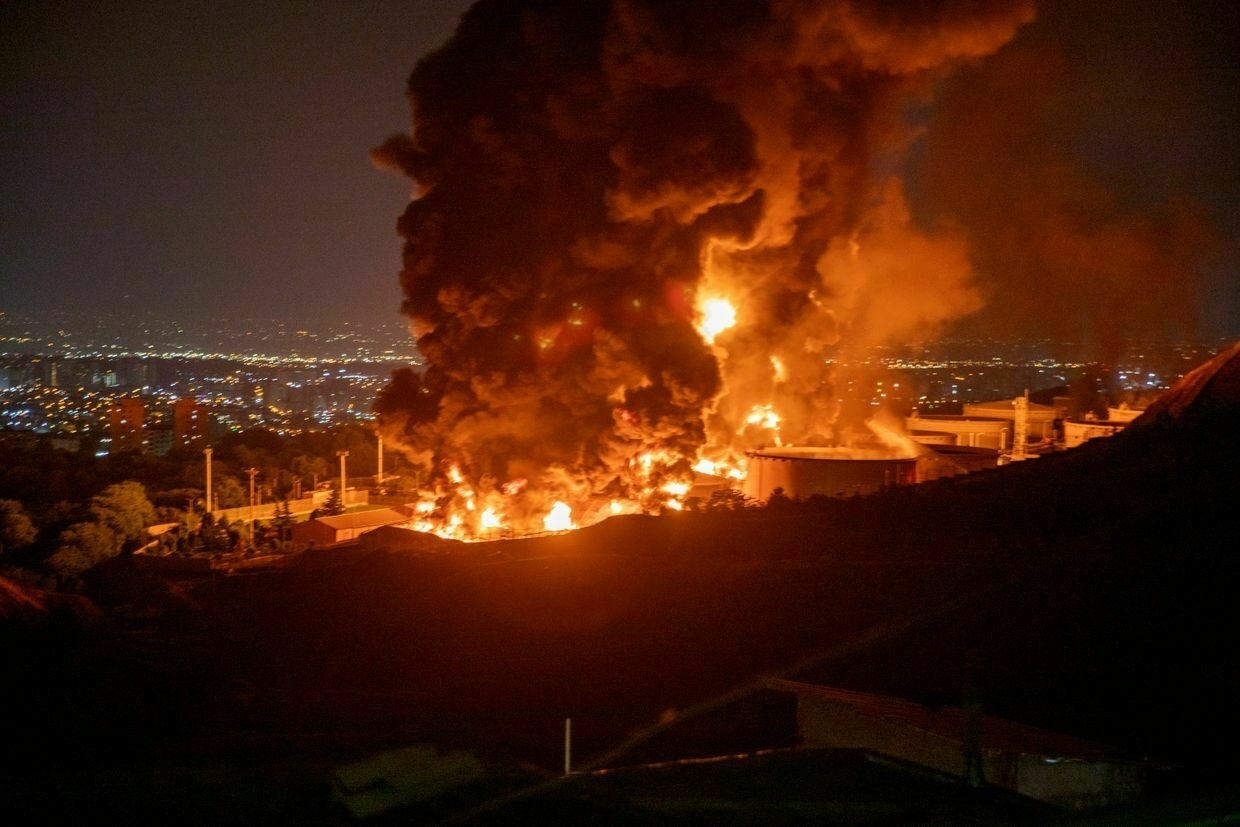
Former Ukrainian POW dies month after being released from Russian captivity

Serhii Dobrovolskyi, a Ukrainian soldier who had been in Russian captivity since 2023, has died just a month after his release at the end of May as part of a 1000-for-1000 prisoner swap, an official from the soldier’s home region announced on June 21.
The case is the latest in a chain of Ukrainian soldiers' unexpected deaths after their return from Russian captivity, highlighting the effects of “widespread and systematic” torture of prisoners of war (POWs) in Russian prisons, reported by the U.N.
“Serhii Dobrovolskyi was released from captivity at the end of May this year. A few days ago, he was met by his fellow townspeople in his hometown,” wrote the head of the soldier’s native Zdolbuniv district in Rivne Oblast, Vladyslav Sukhliak, on Facebook. The exact cause of death was not immediately announced.
A video posted by the Zdolbuniv city council on June 17 shows Dobrovolskyi being greeted in Zdolbuniv by a crowd chanting the Ukrainian anthem as the soldier is hugging his mother. He was also presented with a korovai, a round bread loaf, as part of the symbolic Ukrainian tradition of welcome with bread and salt.
“Finally, after almost two years, the mother hugged her son,” the Zdolbuniv city council commented on the video.
Sukhliak added that Dobrovolskyi was 43 years old at the time of death. “The war with the damned (Russian) occupiers takes lives and health of the defenders,” he wrote.
Earlier in June, another Ukrainian soldier returned from Russian captivity had died unexpectedly.
Dmytro Shapovalov, a 32-year-old defender of Ukraine who was exchanged in 2023 after over a year in Russian prisons, had died on June 9, according to the Ukrainian public broadcaster Suspilne.
His sister Anastasiia said that Shapovalov endured torture, hunger, and psychological pressure in captivity. After his release, Shapovalov returned to military service. He died in his sleep, presumably from heart failure, Suspilne reports.
After his death, a representative of the Coordination Headquarters managing the prisoner swaps, Yuliia Pavliuk, published a video showing Shapovalov eating an apple on the day of his release.
“I had just been dreaming about an apple for a year,” Shapovalov says in the video.
In 2023, a high-ranking officer from the “Azov” brigade, Oleh Mudrak, died at 35 years old, months after his release from Russian captivity. As a POW, he survived the Olenivka camp explosion and endured a dramatic weight loss in just 100 days, as seen in the photos published by Stanislav Aseyev, a Ukrainian writer and activist.
Treatment of “Azov” fighters in Russian prisons is notoriously brutal due to their nationalistic values and Russian propaganda that worked for years to smear the unit’s reputation both in Russia and internationally.
Some Azov fighters died from torture in Russian captivity or were sentenced to decades in prison for alleged war crimes. Many of them were among the 54 Ukrainian prisoners killed in an explosion in Olenivka penal colony in the Russian-occupied part of Donetsk Oblast on July 28, 2022.
Ukraine accused Russia of orchestrating the explosion, while Russia has been systematically preventing international organizations from conducting an independent investigation on the site of the attack.
The U.N. reported widespread torture of Ukrainian POWs in Russia and brutal conditions of their detention over the past years.
Russia ‘afraid to admit’ scale of losses, trying to hide by dumping soldiers’ bodies on Ukraine, Zelensky saysUkrainian authorities have confirmed that at least 20 of the bodies Russia returned as Ukrainian were actually Russian soldiers, President Volodymyr Zelensky said.The Kyiv IndependentTim Zadorozhnyy
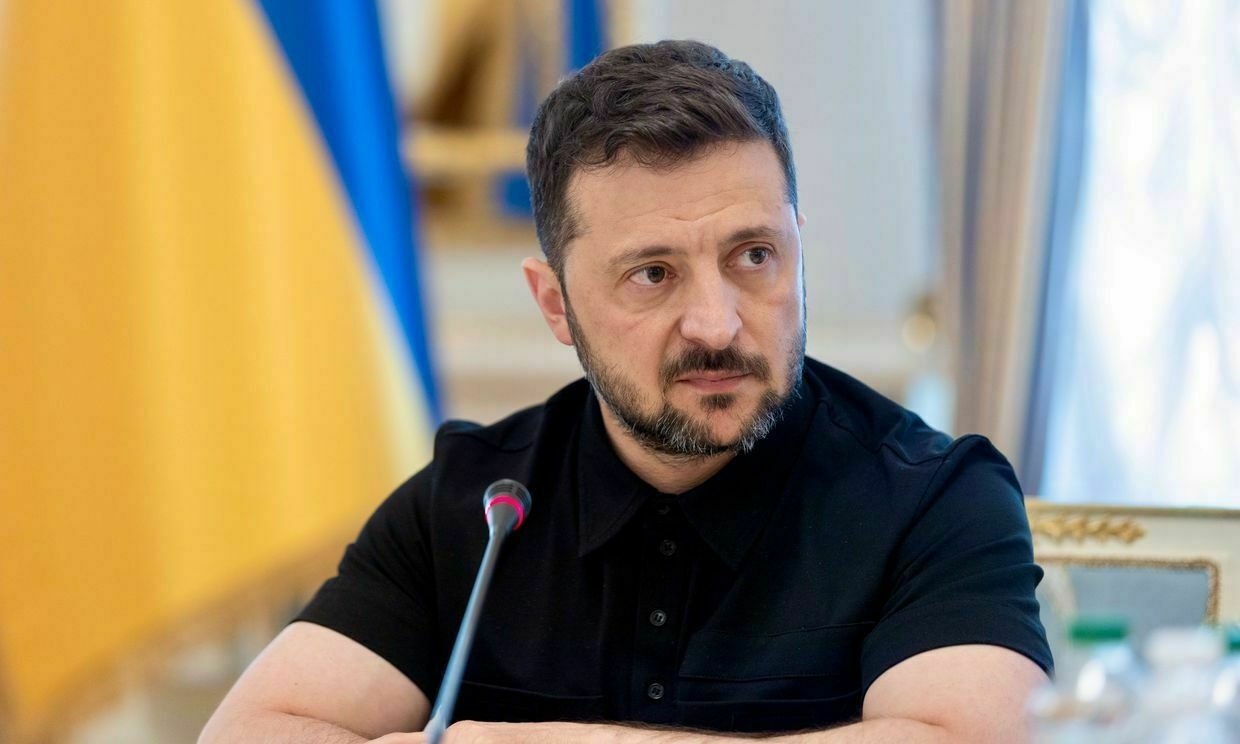
Russia seeks to advance along almost entire front in Ukraine's east, Syrskyi says
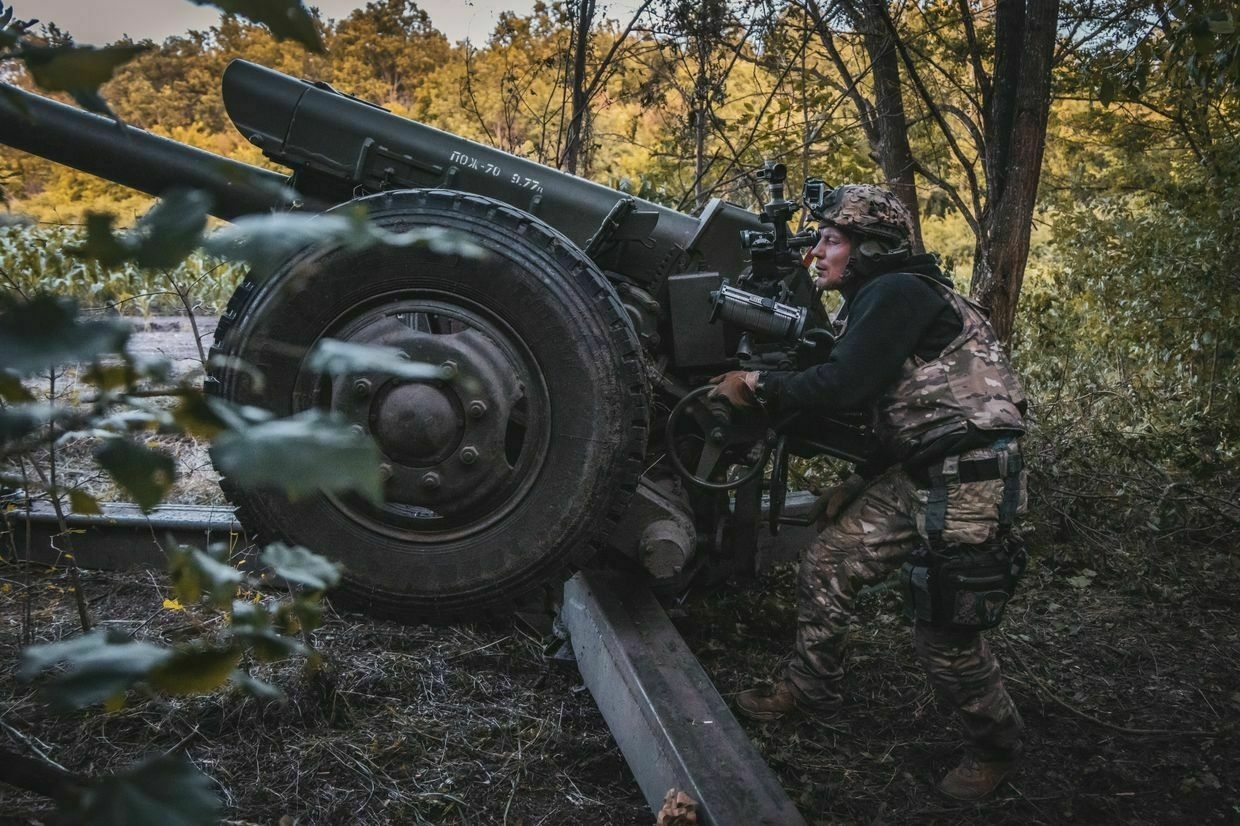
Russian forces are attempting to advance along almost the entire front in eastern Ukraine while trying to establish a buffer zone in northeastern Sumy Oblast, Commander-in-Chief Oleksandr Syrskyi told journalists on June 21.
The comments come as Moscow launched a new summer offensive against Ukraine, disregarding calls by Kyiv and its Western partners for an unconditional ceasefire.
The offensive’s goal is to reach the administrative borders of Donetsk and Luhansk oblasts in the east, and create a buffer zone in the border areas of the Sumy and Kharkiv oblasts, Syrskyi said at a meeting attended by the Kyiv Independent.
As of mid-June, Ukrainian defenders are fighting close to 695,000 Russian troops in Ukraine across a 1,200-kilometer (750-mile) front, the commander said, adding that Moscow recruited about 440,000 contract soldiers this year.
According to the open-source intelligence group DeepState, Russian forces occupied approximately 449 square kilometers (173 square miles) in May, the highest monthly figure this year.
Ukraine has managed to stop the Russian advance in Sumy Oblast at the moment, Syrskyi noted. “The situation there has been stabilized… we have recaptured Andriivka, and advanced between 200 and 700 meters in Yunakivka in a week,” he said.
Russian forces are also attempting to fully oust Ukrainian troops from Russia’s home territory in the Kursk and Belgorod oblasts.
“We control about 90 square kilometers (35 square miles) in the Glushkovsky district of Russia’s Kursk Oblast,” Syrskyi said.
Ukraine launched the cross-border offensive into Kursk Oblast — bordering Ukraine’s Sumy Oblast — last August, initially seizing 1,300 square kilometers (500 square miles) but losing the vast majority of this territory in a Russian counteroffensive earlier this year.
Moscow initially declared to have fully liberated the region on April 26, but this claim was rejected by Ukraine and later disputed by Russian officials themselves.
Kyiv has said the incursion was meant to preempt a Russian offensive into Sumy Oblast and force Russia to commit troops fighting in Donetsk Oblast.
Syrskyi stressed that at one point, the Kursk operation drew in almost 63,000 Russian soldiers, which, in addition to North Korean soldiers, amounted to about 70,000 troops deployed in the region.
“In April 2025, Russian units – and this, I remind you once again, is about 60 thousand people… were tasked with moving to new sectors and reinforcing Russian assault groups in the Pokrovsk, Toretsk, Lyman, Zaporizhzhia, and Kherson directions,” Syrskyi said.
“But our actions in the Glushkovsky district of Russia’s Kursk Oblast thwarted these plans.” At the moment, about 10,000 Russian soldiers are fighting in the Glushkovsky district, the commander added.
Syrskyi also said Russian assault units approached the administrative border of Dnipropetrovsk Oblast but were thrown back.
“As for our plans and intentions. Of course, we will not simply remain in a blind defense… Therefore, we combine defensive actions with active defense and active offensive operations,” Syrskyi said.
For this purpose, the Ukrainian military is scaling up its assault units, which were created at the beginning of the Kursk operation and are currently deployed in all areas of the front, he added.
Russia pulls its scientists out of Iranian nuclear plant, as Israeli strikes threaten decades of collaborationIsrael’s strikes on Iranian nuclear facilities have alarmed none more than Russia, the country that first brought nuclear power to Iran in defiance of Western objections. We’re “millimeters from catastrophe,” said Kremlin spokeswoman Maria Zakharova on June 18 in response to a bombing campaign that Israel launched againstThe Kyiv IndependentKollen Post
